#Jamaican Construction Industry
Explore tagged Tumblr posts
Text
Had to organize some more of my notes.
Some recently published books on inter/transnationalism (especially Black) in the Americas (focus on disability/health and knowledge/art appropriation).
---
Art, music, knowledge (and commodification):
Rude Citizenship: Jamaican Popular Music, Copyright, and the Reverberations of Colonial Power (Larisa Kingston Mann, 2022)
West African Masking Traditions and Diaspora Masquerade Carnivals: History, Memory, and Transnationalism (Raphael Chijikoe Njoku, 2020)
At Home in Our Sounds: Music, Race, and Cultural Politics in Interwar Paris (Rachel Anne Gillett, 2021)
La Raza Cosmetica: Beauty, Identity, and Settler Colonialism in Postrevolutionary Mexico (Natasha Varner, 2020)
Maps of Sorrow: Migration and Music in the Construction of Precolonial AfroAsia (Sumangala Damodaran and Ari Sitas, 2023)
Queer African Cinemas (Lindsey Green-Simms, 2022)
Bossa Mundo: Brazilian Music in Transnational Media Industries (K.E. Goldschmitt, 2020)
The Geographies of African American Short Fiction (Kenton Rambsy, 2022)
Healing Knowledge in Atlantic Africa: Medical Encounters, 1500-1850 (Kalle Kananjoa, 2021)
---
General internationalism:
Transatlantic Radicalism: Socialist and Anarchist Exchanges in the 19th and 20th Centuries (Edited by Jacob and Kebler, University of Liverpool Press, 2021)
Voices of the Race: Black Newspapers in Latin America, 1870-1960 (Edited by Paulina L. Alberto, et al., 2022)
The Eastern Mediterranean and the Making of Global Radicalism, 1860-1914 (Ilham Khuri-Makdisi, 2010)
In a Sea of Empires: Networks and Crossings in the Revolutionary Caribbean (Vanessa Mongey, 2020)
Anarchists of the Caribbean: Countercultural Politics and Transnational Networks in the Age of US Expansion (Kirwin R. Shaffer, Cambridge University Press, 2020)
---
Caribbean:
Between Fitness and Death: Disability and Slavery in the Caribbean (Stefanie Hunt-Kennedy, 2020)
The Ends of Paradise: Race, Extraction, and the Struggle for Black Life in Honduras (Chirstopher A. Loperena, 2022.)
Panama in Black: Afro-Caribbean World Making in the Twentieth Century (Kaysha Corinealdi, 2022)
LGBTQ Politics in Nicaragua: Revolution, Dictatorship, and Social Movements (Karen Kampwirth, 2022)
Chocolate Surrealism: Music, Movement, Memory and History in the Circum-Caribbean (Njoroje M. Njoroje, 2016)
Fugitive Movements: Commemorating the Denmark Vesey Affair and Black Radical Antislavery in the Atlantic World (Edited by James O'Neill Spady, 2022)
The Creole Archipelago: Race and Borders in the Colonial Caribbean (Tessa Murphy, 2021)
Freedom's Captives: Slavery and Gradual Emancipation on the Colombian Black Pacific (Yesenia Barragan, 2021)
---
United States:
Welcome to Fairyland: Queer Miami before 1940 (Julio Capo Jr., 2017)
The Entangled Labor Histories of Brazil and the United States (Edited by Teizeira da Silva, et al., 2023)
Belly of the Beast: The Politics of Anti-Fatness as Anti-Blackness (Da'Shaun L. Harrison, 2021)
Confederate Exodus: Social and Environmental Forces in the Migration of U.S. Southerners to Brazil (Alan Marcus, 2021)
Country of the Cursed and the Driven: Slavery and the Texas Borderlands (Paul Barba, 2021)
Racial Migrations: New York City and the Revolutionary Politics of the Spanish Caribbean (Kirwin R. Shaffer, 2021)
Necropolis: Disease, Power, and Capitalism in the Cotton Kingdom (Kathryn Olivarius, 2022)
West of Slavery: The Southern Dream of a Transcontinental Empire (Kevin Waite, 2021)
---
More:
Transimperial Anxieties: The Making and Unmaking of Arab Ottomans in Sao Paulo, Brazil, 1850-1940 (Jose D. Najar, 2023)
South-South Solidarity and the Latin American Left (Jessica Stites Mor, 2022)
Reimagining the Gran Chaco: Identities, Politics, and the Environment in South America (Edited by Silvia Hirsch, Paola Canova, Mercedes Biocca, 2021)
Modernity in Black and White: Art and Image, Race and Identity in Brazil, 1890-1945 (Rafael Cardoso, 2020)
Region Out of Place: The Brazilian Northeast and the World, 1924-1968 (Courtney Campbell, 2022)
Selling Black Brazil: Race, Nation, and Visual Culture in Salvador, Bahia (Anadelia Romo, 2022)
Hiding in Plain Sight: Black Women, the Law, and the Making of a White Argentine Republic (Erika Denise Edwards, 2020)
Peripheral Nerve: Health and Medicine in Cold War Latin America (Edited by Anne-Emanuelle Birn and Raul Necochea Lopez, 2020)
#ecology#abolition#landscape#black music geography#reading recommendations#black methodologies#indigenous pedagogies#book recommendations#multispecies#tidalectics#ecologies
17 notes
·
View notes
Text
Search Engine Optimization Service (SEO)

Have you spent a lot of money and resources on your amazing website and wondered why the traffic doesn't grow much? Being visible in Google search is of utmost importance nowadays. Why? 85% of people who are looking for products or services perform the search online.
Now, the hard truth is…
…if your website doesn't have backlinks, you are NOT going to be visible on Google!
With my advanced link-building strategy, you receive high-quality backlinks that will improve your SEO rankings so you can get more traffic and sales!
What are you going to receive?
High-quality backlinks in a simple report Ahrefs DR 50-70 SEO improvement that works like a charm Trustworthy & safe white hat service
You can also check my premium packages for more link juice and power coming to your website!
Let me do that heavy lifting for you!
🚀 Bringing your business to the extraterrestrial level with SEO & Content Marketing. My name is Virtual Superman and I lift the heaviest weights for you! 🔥
PROVEN Exclusive Backlinks That Boost Your Rankings.
BEAT YOUR COMPETITORS CALL VIRTUAL SUPERMAN
✅ Service Link ✅
Industry expertise: Agriculture • Animals & pets • Art & design • Beauty & cosmetics • Blockchain & cryptocurrency • Construction • Dental care • Education • Energy & utilities • Environmental • Events planning • Fashion & apparel • Financial services & business • Food & beverage • Gaming • Health & wellness • Kids • Legal • Lifestyle • Manufacturing & storage • Marketing & advertising • Media & entertainment • Medical & pharmaceutical • Non profit • Photography & videography • Public sector • Real estate • Religion & spirituality • Retail & wholesale • Science • Services • Society & culture • Sports & fitness • Technology • Transportation & automotive • Travel & tourism • Writing & publishing Language: Albanian • Arabic • Bengali • Bosnian • Bulgarian • Catalan • Chinese (simplified) • Chinese (traditional) • Croatian • Czech • Danish • Dari • Dutch • English • Estonian • Filipino • Finnish • French • Georgian • German • Greek • Haitian • Creole • Hawaiian • Hebrew • Hindi • Hungarian • Icelandic • Indonesian • Irish Gaelic • Italian • Jamaican Patois • Japanese • Kazakh • Korean • Latin • Latvian • Lithuanian • Luxembourgish • Macedonian • Malay • Maltese • Nepali • Nigerian • Norwegian • Oriya • Persian/Farsi • Polish • Portuguese • Punjabi • Romanian • Russian • Serbian • Slovak • Slovenian • Somali • Spanish • Swahili • Swedish • Tagalog • Tamil • Thai • Turkish • Urdu • Vietnamese • Welsh • Sinhala • Marathi • Ukrainian • Telugu • Gujarati • Pashto
#seo services#backlinks#website#fiverr#digital marketing#website design#search engine optimization#seo
2 notes
·
View notes
Text
Labourer jailed after chemical attack on janitor
Courthouse in George Town (CNS): A Jamaican construction worker who blinded a janitor at the luxury condo complex where they both worked was jailed for three years last month after he pleaded guilty to grievous bodily harm. Beno Rayvon McKenzie (30) threw industrial-strength cleaner at Samuel Ritch during an argument in January last year while Ritch was mopping the floor at the Aura in South…
0 notes
Text
Anna Butterss Interview: Los Angeles in 2024

Photo by Samantha Lee
BY JORDAN MAINZER
For much of their career, bassist Anna Butterss has constructed bridges between musical worlds. The classically trained Australian musician moved to Los Angeles a decade ago, not too long after beloved experimental guitarist Jeff Parker relocated there. Like the versatile Parker, who has made his mark in both the jazz and post-rock worlds, Butterss quickly became an in-demand player in the jazz and indie rock spheres, both as a session and touring musician. Shortly after moving, Butterss connected with Parker, joining his now long-running quartet, alongside saxophonist Josh Johnson and drummer Jay Bellerose. (I first heard Butterss' nimble work on Makaya McCraven's landmark 2018 album Universal Beings.) At the same time, Butterss, always on the periphery of hyped indie music through their friends, found themselves alongside Aughts stalwarts Jenny Lewis and Andrew Bird and then-up-and-comers like Phoebe Bridgers. Over the past five years, Butterss has buoyed career reinventions and risen alongside their peers.
2024, then, feels like the first year where Butterss is moving to the forefront. Though they released their debut album Activities and helped Parker immortalize the Enfield Tennis Academy in 2022, this time, over the span of a mere six months, they've been a part of three major improvisational jazz records. First, Butterss is one-fifth of SML, who I profiled earlier this year after their debut record release in June. SML Songs like "Industry" showcased Butterss' ability to steadily drive a track alongside freewheeling bandmates, while "Dolphin Language" gave them a turn to have fun splintering. The quintet played two sets at the inaugural Warm Love Cool Dreams festival at the Salt Shed in September, one performing material from Small Medium Large, the other backing Jamaican dancehall DJ and singer Sister Nancy.
Butterss delves deeper into the world of grooves on the just-released new Jeff Parker ETA IVtet album The Way Out of Easy, a follow-up recording to Mondays at the Enfield Tennis Academy. Like the latter, The Way Out of Easy was recorded at the ETA and mixed live by engineer Bryce Gonzales, on a night in January 2023. The four longform tracks that make up the record are certainly opportunities for Parker and Johnson's expressions, but don't discount Butterss' understated and underrated adaptability. Throughout "Freakadelic", an extended version of a long-time Parker composition, Butterss and Bellerose provide a hip-hop groove underneath Parker's prickly and sinuous lines, only to wake up a little bit as Johnson's saxophone whirrs and hypnotizes. Butterss mirrors Johnson's rounded mournfulness on the otherwise beatific "Late Autumn", while on "Easy Way Out", they emulate Parker's slow cascades, a perfect contrast to Johnson and Bellerose's expressiveness. Of course, closer "Chrome Dome" ends up a blissed out dub song, Butterss once again a masterfully stable counterpart to Johnson's garbled notes and Bellerose's polyrhythms.
It's clear, then, that all of Butterss' experiences informed their second solo album and International Anthem debut, Mighty Vertebrate, released last month. In early 2023, Butterss found themselves wanting to create while balancing their busy schedule. In order to force themselves to write freely without succumbing to their own judgements and internal monologue, Butterss adopted constraints similar to Brian Eno's Oblique Strategies. "Pokemans", for instance, arose from the goal to use the bass in a way that belies the instrument's typical role. But Butterss was careful not to let Mighty Vertebrate be an album solely reflective of its process, and it sounds loose. They created the stems of the songs before fleshing them out with percussionist Ben Lumsdaine; at that point, the songs were ready for tracking at Chris Schlarb's BIG EGO with Johnson and another SML bandmate, Gregory Uhlmann. As a result, Mighty Vertebrate is diverse and extensive. "Ella" creates a world out of a two-note guitar line and saxophone processed through a synthesizer. "Lubbock" juxtaposes wiry guitar and swirling woodwinds atop raining percussion. "Saturno"'s warped bells give way to a percussion and saxophone groove, Butterss leading the evolution into a rich tapestry. Standout track "Dance Steve" mashes up Malian desert blues and synth punk, a collage of samples, syncopated 808s, synths, and in a full circle moment, a Jeff Parker guitar solo. Perhaps most impressive is that Mighty Vertebrate is cohesive through natural patterns that emerged throughout its creation, Butterss paring its songs down before building them back up, just like on their work with SML and Parker.
In September, a week before the album's release and just before SML's sets at Warm Love Cool Dreams, Butterss did get to try out Mighty Vertebrate songs live with their band at Marz Brewing. They then played a proper record release show in Los Angeles at 2220 Arts + Archives, the day the album came out digitally and on vinyl. A few days later, I spoke to Butterss over Zoom about the making of Mighty Vertebrate, the L.A. scene and International Anthem, post-rock, album and song title meanings, and misheard lyrics. Next week, starting on Monday, Butterss will take a victory lap to celebrate their stellar year, playing in a three-night International Anthem residency at Public Records in Brooklyn: with Jeff Parker ETA IVtet, SML, and their band. It's safe to say you'll be continuing to hear Butterss' name a lot for the next several years. Not only is SML set to return in 2025 and Butterss working on their next record, but they've been a full time member of none other than Jason Isbell & the 400 Unit for a year. Add the Americana/alt-country genre to the list of worlds among which Butterss has built connections.
Read our conversation below, edited for length and clarity.

Since I Left You: Why did you decide to make a record using Oblique Strategies-inspired tactics? Was it out of necessity, or was it something you always wanted to do?
Anna Butterss: It's the former for sure. Writing music, I enjoy doing it, but I also find it very hard, because I'm incredibly judgmental, and it's hard for me to think in the moment and follow an idea without already judging it. I'm like this with other things as well. I've always practiced the bass with these very specific restrictions in mind, very structured, so this was a way to get myself to be creative.
I started writing music that way a few years ago. It was a little challenge to myself called "one-hour beats," which is exactly what it sounds like. [laughs] How much of a beat can you make in one hour? If it's bad, if you don't like it, you've only spent an hour and have probably learned something. I started [Mighty Vertebrate] off like that. I spent a lot of time working on the music, but I'd go back and open up one of the ideas and ask, "Is this one cool?" I'd work on that one for an hour or two hours and put it away. I spent the whole year doing that.
SILY: Did you ever fully stray from your initial goal? Or were the finished songs pretty faithful to their original restrictions?
AB: I strayed away. The restrictions were a means to an end, to get something written. Once you get an idea down, it's much easier to manipulate it and try different things, but getting an idea down firstly is the hardest part. Once I felt like I had a strong or compelling idea, I'd let myself do whatever I needed to do. If I was having a good time working on something, I wouldn't put more restrictions on it.
SILY: What ties all of these songs together? Is it the process you used to make them?
AB: Hmm...that's a good question. It's a pretty eclectic record. I think the thing that ties them together for me is that they're songs I wrote during a period of my life, during 2023. A lot of them have similar sonic tendencies, a lot of guitars because it's an instrument I can kind of play, and drum machine. But the thing that ties them together is emotionally how I was experiencing that year. With the band, we all play together a particular way, and that ties them together, too. If I listen back to them, I can hear melodic tendencies I have and forms I gravitate towards, but I wasn't trying too hard to push them all into the same zone.
SILY: At what point did you bring in the band in the process of making Mighty Vertebrate?
AB: Quite late. I brought in [co-producer] Ben Lumsdaine...almost a year after we started writing it. I tried to get as much of it done by myself as I could. I had demos that were in pretty good shape. All the parts were there, but I wasn't trying too hard to get quality recordings. Some of the songs don't have a live band on them, like "Bishop" or "Dance Steve". Ben and I worked on them a lot. We tracked drums, bass, and more guitars. The other two guys in the band, I wrote charts for everything and we rehearsed one time and recorded in the studio for two days. Ben and I did some more overdubs, and that was it.
SILY: The songs on the album that do have a live band don't sound too different from the ones that don't have a live band. That is, if you were to listen to the album without paying the utmost attention, you might not necessarily realize which songs had a band and which didn't. There's an abstraction to the aesthetic. Was that something you were going for?
AB: In a way, yes. I had experimented a little bit on Activities with blending live drums, and we did synths with live bass. I had that in mind when I was making the record. Also, the fact that you have Greg playing guitar on some of the tracks, me playing on some of them, Jeff playing on some of them, Ben playing on some of them, it blurs the lines. Both Greg and Josh use effects in an organic way when they're playing, so it gets blurred a bit in a way I find pleasing. I wanted it to be its own world, not just an acoustic jazz record or an electronic record. I wanted it to live in a between space.
SILY: Do you think the individual musicians' playing styles started to blend, too? For instance, there were some guitar solos that sounded like Jeff Parker that might not have been Jeff Parker.
AB: Definitely. Jeff's been a big influence on the four of us, for sure. We've all played with him, and when I started messing around with the guitar, I thought, "Oh, this is just me sounding like a very cheap version of Jeff," because that's the guitarist I listen to the most. I think I sound a little less like him on the guitar now. Playing together for a really long time in different combinations, there's a shared language, sonic world, and tendencies. I hope other people hear this record and think, "This sounds like something that came out of Los Angeles in 2024." I like records where we can still have that sense of place, even though we're making music in such a globalized way. I feel like we have a little scene in Los Angeles that has a distinctive sound.
SILY: Certainly. The International Anthem family, while based in Chicago, has so many artists who are based in L.A. There's also the Enfield Tennis Academy and its branches. It's like one of the last remaining active scenes.
AB: [laughs] I hope not! It's definitely an International Anthem-sounding record as well. Greg's from Chicago, Josh grew up near Chicago, Jeff spent a lot of time in Chicago, and Ben, Josh, and I all went to school in Indiana, so we have a strong Midwest connection.
SILY: Where did the vocals on "Breadrich" come from?
AB: The ones that are a little sing-song are me. It's [inspired by] a character from a Mexican TV series called La Casa de las Flores, a Netflix series I've watched about three times during the pandemic. It's like a telenovela, but it's very modern and revolves around a lot of drag queens. There are trans people and bisexual main characters, but it's also a telenovela, so it's very dramatic and the plotlines are kind of ridiculous. One of the main characters, Paulina de la Mora, is kind of iconic and has an iconic way of speaking. I was also listening to a lot of Madlib and MF Doom, and MF Doom has so many cartoon and comic elements, so "Breadrich" was my hint at that, with me reimagining what it would be like if [Paulina de la Mora] had a spinoff.
I got into hip hop...in my 20's, having come from a very jazz background. It fascinates me and I love it. I'm not super directly hip hop-influenced, but it's something I think about a lot when working on things.
SILY: I was going to ask, since you collaborated on this record with John Herndon on the video for "Pokemans" and the album art, whether you were influenced by any of his A Grape Dope material.
AB: Not directly. Also, I get a ton of Tortoise comparisons, and I get why, but I really tried to steer clear of listening to that type of music when I was making this record because I didn't want it to sound too derivative. But I love John and am happy he did such great art for the record.
SILY: The Chicago post-rock connection to this current wave of jazz is palpable, because Chicago jazz preceded Chicago post-rock.
AB: Definitely. I've spent a fair amount of time in Chicago but have never lived there. I'm listening to all these records 10-20 years after they came out, so I'm getting a picture and sense of it. I also play a lot with Jeff and am close with people who have been involved in those scenes, so I'm getting a secondhand version of it. But I think it's cool that music that's been around for a while is still very relevant and current sounding.
SILY: How did you come up with the track titles on Mighty Vertebrate?
AB: "Bishop", my grandfather was a bishop. [laughs] What else do we have? "Dance Steve", I put a dance beat under a sample I thought sounded like Steve Reich. It was stuff like that. I do have a note in my phone where I collect phrases people will say, if they sound interesting, which is where "Breadrich" came from. My partner said that we were "bread-rich" after a friend gave us a bunch of bread, which I thought was funny.
SILY: It can be somewhat of a Rorschach test. Some of the titles on Small Medium Large were working titles or joke titles that ended up being perfect. It adds a levity to the project.
AB: I remember talking with Greg when trying to come up with titles and being like, "It's hard to come up with song titles that are original," and he was just like, "Oh, don't worry about that. There will always be another song [that shares a title.]" I don't think it matters that much. The record title, more so. But at the end of the day, it's instrumental music. It's already pretty abstract, and I want people to be able to have their own experience with it, instead of saying, say, "'Seeing You' is about the time I saw this person." Anyone can interpret it their own way and have their own relationship with it.
SILY: So what's the meaning of the record title to you?
AB: That came from an Andrew Bird lyric I misheard and was singing wrong when I was touring with him. [On Inside Problems' "Stop n’ Shop", it's] supposed to be "Mighty bird of prey," and I didn't realize that until he mentioned it. [laughs] I think it's evocative of a lot of different things. It can be a made-up or fantastical creature, or a way of describing humanity or the dichotomy of humans being so powerful but at the end of the day, vertebrates who will die just like everything else. There's an element of that. It doesn't mean one specific thing to me. I like that it's open-ended.
SILY: The fact that it came from something misheard, but still makes sense, is cool.
AB: [laughs] Yeah. I tried to convince Bird to change the lyric. He wasn't interested.
SILY: Do you pretty actively listen to new music?
AB: I'm trying to more these days. KCRW's morning program, Morning Becomes Eclectic, plays a lot of different genres, and I listen to that pretty religiously. It's where I find a lot of new music. That's probably where I heard Jenny Lewis. I remember driving on the freeway, hearing it and thinking, "What is that?" It turned out a bunch of my friends played in her band. These days, I'm trying to listen to records right when they come out, because otherwise it gets overwhelming.
SILY: What's your approach to playing the songs on Mighty Vertebrate live?
AB: There's more room for expansion. All of the tracks on the record are pretty short; I like to get in and get out, not have anything excessive. [Live,] there's more improvisation involved. A lot of the songs, the way they're structured, the bass line holds everything together statically, and everything is moving around it. I love that. As a bass player, that's what I want to do. I want to be the center of things and everyone else swirling around on top. I had the easiest time playing it live while demanding a lot of everyone else. [laughs]
SILY: Do you foresee these songs taking new shapes the more you play them?
AB: Definitely. That would be ideal. I don't know how many opportunities I'll get to play them. Unfortunately, it's really hard. Everyone's super busy, and I feel like it needs to be these specific people playing the music, and our schedules are all packed. After our show at Public Records, I'd like to continue to play it live and tour, but I don't know how that would work. I don't feel a need to adhere strictly to what's on the record, because if people want to hear the record, they should listen to the record. That's always been my feeling about it.
SILY: What else is next for you in the short and long term?
AB: Some SML stuff, definitely, in the new year. I'll start thinking about the next record. But right now, I'm trying to get through the rest of this year without having an emotional breakdown. [laughs]
SILY: You're very prolific.
AB: I'm a bass player. It's a blessing and a curse.
SILY: Is there anything you've been listening to, watching, or reading lately that's caught your attention or inspired you?
AB: Let me pull up my listening journal...I've been all over the place. My friends have a band called Twin Talk, [based] in Chicago. It's a great trio. They just put out a new record I've been heavily spinning. It's very beautiful. A lot of Brazilian music. We're reorganizing our record collection, so I've been going back and finding a lot of things. Honestly, it's all over the place. I like starting with my friends' records and going from there. Michael Mayo just put out a great record last week. I feel like a bunch of people put out records when I put out mine. Every Instagram post was about a new record.
#interviews#live picks#anna butterss#nonesuch#international anthem#chris schlarb#big ego#gregory uhlmann#public records#john herndon#mighty vertebrate#samantha lee#jeff parker#josh johnson#jay bellerose#makaya mccraven#universal beings#jenny lewis#andrew bird#phoebe bridgers#activities#enfield tennis academy#sml#warm love cool dreams#the salt shed#small medium large#sister nancy#jeff parker eva ivtet#the way out of easy#mondays at the enfield tennis academy
0 notes
Text
The Future of Real Estate in Jamaica: Trends and Predictions
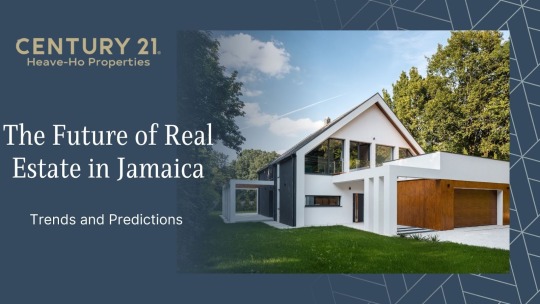
Jamaica has long been a popular travel destination with its lively culture, gorgeous scenery, and welcoming residents. The country's economy has grown significantly in recent years, and this expansion has affected the industry of real estate kingston jamaica. Several significant forecasts and trends are influencing how Jamaican real estate is projected to grow.
Development Driven by Tourism
Tourism has long been a pillar of Jamaica's economy, and this pattern is probably here to stay. Real estate development is anticipated to increase in popular tourist destinations like Montego Bay, Ocho Rios, and Negril due to the anticipated demand for vacation homes, resorts, and short-term rentals. To meet the needs of the increasing number of travelers looking for immersive and sustainable experiences, developers will probably concentrate on building opulent yet environmentally responsible lodging.
2. Technology Integration
The world's real estate industry is going through a technological revolution, and Jamaica is no exception. Smart home technology, virtual reality tours of properties, and blockchain to facilitate transparent transactions in the property market are expected to increase in popularity. These advancements not only improve the buying experience for home buyers but also aid in modernizing the real estate industry in Jamaica.
3. Affordable Housing Programs
While the number of luxury developments is increasing, there is growing recognition of the necessity of affordable houses. In the coming years, Jamaican authorities and the private sector are set to work on various initiatives to address the housing requirements of the populace. It could include the building of affordable, rent-to-own programmes as well as the rehabilitation of urban areas to cater for different economic groups.
Read More- Now is the time ! Invest in Jamaican Real Estate !
4. Sustainability and Green Practices
Jamaica, as well as others, has been placing a greater emphasis on sustainable development. It means increasing environmentally friendly and energy-efficient construction methods for the property market. With solar power-powered houses and Green Building Certifications, what's to come for real property in Jamaica is likely determined by a commitment to conservation of the environment and sustainability over the long term.
5. Rural Development Opportunities
Beyond the tourist hot spots, there is potential development in rural areas. The government might concentrate on developing infrastructure in these areas, making them more appealing to international and local investors. It could create new opportunities for real estate that were previously undiscovered, which could spur economic growth outside the typical urban cities.
6. Changes in Work Dynamics remote work
The shift to remote work affects the real estate market worldwide, and Jamaica isn't an exception. With a growing number of workers opting for flexible working arrangements and working from home, there could be an increase in the demand for properties which cater to remote working demands. It could lead to the establishment of co-working areas, home offices, and communities designed to support a flexible workforce.
Conclusion
Real Estate Jamaica is bright and exciting, with a mixture of luxurious developments, affordable housing projects, technological advances, and an emphasis on sustainable development. As Jamaica grows economically, the real estate sector is expected to play an essential part in shaping the future of both rural and urban areas. Jamaica has the potential to lead the Caribbean and beyond in real estate development by adopting innovative ideas and catering to the diverse needs of both visitors and locals. To make wise decisions in this dynamic market, developers, investors, and policymakers must closely monitor these developments.
#century 21#century 21 jamaica#real estate agent#jamaica#property for sale#real estate kingston jamaica
0 notes
Text
The Future of Jamaican Real Estate: Trends that Shaping the Market in 2024

Real Estate Jamaica is famous for its stunning scenery, vibrant culture and warm hospitality is undergoing changes in the real estate market. In 2024, a number of important concepts will define how the real estate industry will develop in property in the Caribbean paradise. The world is constantly changing due to technological advances and shifting consumer preferences, creating challenges as well as opportunities for those in the industry.
Trends that Shaping the Jamaican Real Estate Market in 2024
Green Construction and Sustainable Development
As the international increasing focus on sustainability the real estate industry in Jamaica is shifting towards environmentally friendly and energy efficient structures. Developers are adopting eco-friendly construction methods and renewable energy sources and sustainable design principles. This is in accordance with global guidelines for environmental protection and is in line with the increasing demand of green-conscious consumers.
2. Proptech and Digital Transformation
Jamaica's real-estate industry is being transformed thanks to the internet, bringing into a new age of accessibility and efficiency. Proptech (property technology) helps to simplify processes ranging from searches for properties and transactions to managing properties. The use of virtual reality (VR) tours as well as Augmented reality (AR) apps as well as blockchain technology are all vital components to improve the experience of consumers overall and transparency in the market.
3. The Property Selection Process is Influenced by Remote Work
The increase in remote work globally has affected real estate preferences and Jamaica isn't any different. With more people opting for flexible working arrangements and a growing demand for homes that provide an ambiance that is peaceful and reliable connectivity is growing. The areas with a high-speed internet connection and remote working facilities are gaining popularity as areas for investing in real estate.
Read More- Tips for Buying Properties in Jamaica
4. Investments in tourism-related industries
The growing tourist industry of Jamaica is a major factor in the growth of real estate investment. The need for holiday accommodations, boutique hotels as well as luxury hotels is increasing because more and more people are seeking unforgettable and memorable experiences. Investors who are smart can profit in this situation by diversifying their portfolios by including tourist-related assets.
5. Initiatives to provide affordable Housing
In Jamaica dealing with the demand for affordable housing is an important issue. Private-sector partnerships and government efforts collaborate to offer affordable housing options for the local population. It includes the construction of low-cost housing communities as well as favorable mortgage terms and innovative finance strategies to help make homeownership more affordable.
6. The security and safety of smart home technology are a top priority.
Security concerns are essential to any residential or commercial real estate market and Jamaica is increasingly focusing on implementing smart home technology to increase security. These advanced technologies, ranging from security systems, to intelligent locks as well as security networks that integrate, are now a standard feature in new developments, and entice buyers who are looking for a secure living space.
Conclusion The convergence of sustainability, technological advancements and changing lifestyles alters the Jamaican real property market. To address these developments developers, investors and lawmakers are making adjustments to ensure that property for sale in kingston jamaica in the near future is sustainable, inclusive and technologically advanced. These developments will continue reinventing the market for real estate in 2024, keeping Jamaica's real estate market thriving and hopeful for the next few years.
#remax elite realty#jamaica#property for sale#real estate jamaica#house in jamaica west indies for sale#property for sale in jamaica#real estate agent jamaica
0 notes
Text
Treat Your S(h)elf: Imperial Boredom: Monotony and the British Empire by Jeffrey A. Auerbach (2018)

The British Empire has had a huge impact on the world in which we live. A brief look at an atlas from before World War One will show over hundred colonies that were then part of the Empire but now are part of or wholly sovereign states. Within these states much remains of the commercial, industrial, legal, political and cultural apparatus set up by the British. In many former colonial areas, political issues remain to be solved that had their genesis during the British era.
The legacy of the British has been varied and complex but in recent years much attention has been on making value judgements about whether the Empire was a good or bad thing. Of course the British Empire was built on the use of and the continual threat of state violence and there were appalling examples of the use of force. As well as the slave trade, there was the Amritsar Massacre in 1919, the 1831 Jamaican Christmas Uprising, the Boer War concentration camps (1899-1902) and the bloody response to the Indian Mutiny of 1857. However, we must not just focus on these events but examine the Empire in all of its complexities.
In the current moment of our times, it would seem that as a nation we are more concerned about beating ourselves up and making the nation feel guilty than understanding how and why the British came to exist, and setting the growth of the British Empire into historical context to be wise about the good, the bad, and the ugly. History has to be scrupulously honest if it’s not to fall prey to propaganda on either side of the extreme political spectrum.
Truth be told I find these questions about the British Empire being good or bad either boring or unhelpful. It doesn’t really bring us closer to the complexity and the reality of what the British Empire was and how it was really run and experienced by everyone.
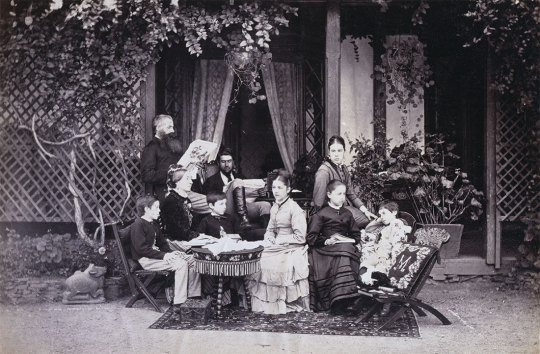
For myself personally the British Empire was part of the fabric of our family history. The Far East, the Middle East and Africa figured prominently and at the centre of which - the jewel in the crown so to speak - was India. In my wider family clan I’ve come to learn about - through handed down family tales, personal diaries, private papers, and photos etc - the diverse experiences of what certain eccentric characters got up to and they ranged from missionaries in India and Africa to military men strewn across the Empire, from titans of commerce in the Far East to tea farmers in East Africa, from senior colonial civil servants in Delhi to soldier-spies on the North West Frontier (now northern Pakistan).
My own experience of being raised in India, Pakistan as well as parts of the Far East was an adventure before being carted off to boarding school back in Britain and then fortunate in later life to be able to travel forth to these memorable childhood places because of the nature of my work. Having learned the local languages and respectful of customs I have always loved to travel and explore deeper into these profound non-Western cultures. Despite the shadow of the empire of the past I am always received with such down to earth kindness and we share a good laugh. So I always assumed that the British Empire played a central role in the life of Britain has it had in our family history just because it was there. But historians are more concerned with much more interesting questions that challenge our assumptions.


So when I was at university it was a great surprise to me to first read a fascinating history of the British Empire by Bernard Porter called ‘The Absent Minded Imperialists: Empire, Society and Culture in Britain’ (2004). Porter was, in his own words, “mainly a response to certain scholars (and some others) who, I felt, had hitherto simplified and exaggerated the impact of ‘imperialism’ on Britain in the nineteenth and twentieth centuries, after years in which, except by empire specialists like myself, it had been rather ignored and underplayed. […] the main argument of the book was this: that the ordinary Briton’s relationship to the Empire in the nineteenth and early twentieth centuries was complex and ambivalent, less soaked in or affected by imperialism than these other scholars claimed – to the extent that many English people, at any rate, possibly even a majority, were almost entirely ignorant of it for most of the nineteenth century.” It became a controversial book but a welcome one because it was well researched and no doubt made some imperial historians choke on their tea dipped biscuits (and that’s not even counting the historically illiterate post-colonial studies crowd in their English faculties who often got their knickers in a twist).
Years later I read another fascinating collection of scholarly chapters by different historians called ‘Anxieties, Fears, and Panic in Colonial Settings: Empires on the Verge of a Nervous Breakdown’ (2016) edited Harald Fischer-Tiné which challenged a rosy vision of Britain’s imperial past by tracing British imperial emotions: the feelings of fear, anxiety, and panic that gripped many Britons as they moved to foreign lands. To be fair both Robert Peckham’s Empires of Panic: Epidemics and Colonial Anxieties (2015) got there before him but Tiné’s history set the trend for others to follow such as Marc Condos’s The Insecurity State: Punjab and the Making of Colonial Power in British India (2018) and Kim Wagner’s Amritsar 1919: An Empire of Fear and the Making of a Massacre (2019).
They all set out their stall by highlighting the sense of vulnerability felt by the British in the colonies. Fisher-Tiné’s edited book in particular highlights the pervasiveness of feelings of fear, anxiety, and panic in many colonial sites. He acknowledges that: “the history of colonial empires has been shaped to a considerable extent by negative emotions such as anxiety, fear and embarrassment, as well as by the regular occurrence of panics.”
The book suggests that these excessive emotional states were triggered by three main causes. First, the European population in British India was heavily dependent on Indian servants and subordinates who might retaliate against unfair masters or whose access to European dwellings could be used by malevolent others to poison the white elite. Second, anxieties about the assumed toxic effects of the Indian climate fuelled also poisoning panics. Diseases such as malaria and cholera were considered to be the ultimate outcome of an “atmospheric poison”. Third, Indian therapeutics and the system of medicine were also identified as a potential cause of poisoning European communities. These poisoning panics only helped reinforce the racial categorisations of Indians, the moral supremacy of the white population, and the legitimacy of colonial rule. Overall the book expanded the understanding of how a sense of fragility rather than strength shaped colonial policies.
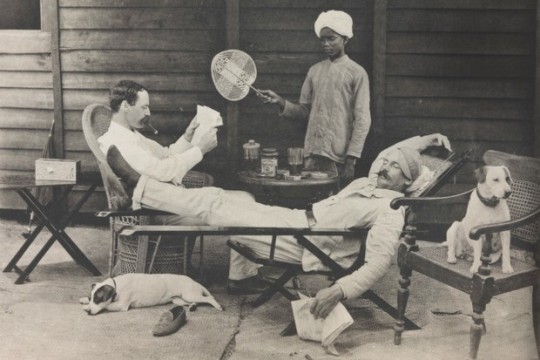
Now comes another noteworthy book which again sound a little quirky but is no less meticulous in its research and judicious in its observations. Many books about the British Empire focus on what happened; this book concentrates on how people felt. When I was first given it I was predisposed to be negative because here was a book about ‘feelings’ - the current disease of our decaying western culture. But I was pleasantly surprised.
Was the British Empire boring? So asks Jeffrey Auerbach in his irreverent tome, ‘Imperial Boredom: Monotony and the British Empire’ (2018).
It’s an unexpected question, largely because imperial culture was so conspicuously saturated with a sense of adventure. The exploits of explorers, soldiers and proconsuls – dramatised in Boys’ Own-style narratives – captured the imagination of contemporaries and coloured views of Empire for a long time after its end. Even latter-day historians committed to Marxist or postcolonial critiques of Empire tend to assume that the imperialists themselves mostly had a good time. Along with material opportunities for upward mobility, Empire offered what the Pan-Africanist W.E.B. DuBois called ‘the wages of whiteness’ – the psychological satisfactions of membership in a privileged caste – and an escape from the tedium of everyday life in a crowded, urbanised, ever less picturesque Britain.
The British Empire has been firmly tied to myth, adventure, and victory. For many Britons, “the empire was the mythic landscape of romance and adventure. It was that quarter of the globe that was coloured and included darkest Africa and the mysterious East.” Cultural artifacts such as music, films, cigarette cards, and fiction have long constructed and reflected this rosy vision of the empire as a place of adventure and excitement.
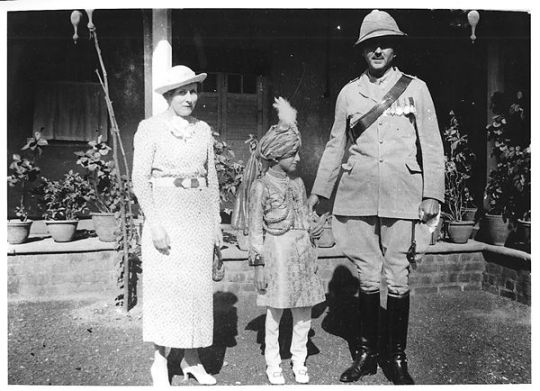
Against this widely held view of the empire, As Auerbach argues here, however, the idea of Empire-as-adventure-story is a misleading one. For contemporaries, the promise of exotic thrills in distant lands built up expectations which inevitably collided with reality.
In a well-researched and enjoyable book, the author argues “that despite the many and famous tales of glory and adventure, a significant and overlooked feature of the nineteenth-century British imperial experience was boredom and disappointment.” In other words, instead of focusing on the exploits of imperial luminaries such as Walter Raleigh, James Cook, Robert Clive, David Livingstone, Cecil Rhodes and others, Auerbach says pay attention to the moments when many travellers, colonial officers, governors, soldiers, and settlers who were gripped by an intense sense of boredom in India, Australia, and southern Africa.
For historians, the challenge is to look past the artifice of texts which conceal and compensate for long stretches of boredom to unravel the truth. Turning away from published memoirs and famous images, therefore, Auerbach trains his eye on the rough drafts of imperial culture: letters, diaries, drawings. He finds that Britons’ quests for novelty, variety and sensory delight in the embrace of 19th-century Empire very often ended in tears. Indeed Auerbach identifies an overwhelming emotion that filled the psyche of many Britons as they moved to new lands: imperial boredom.

Precision in language and terminology is essential and Auerbach begins by setting out what he means by boredom. Adopting Patricia Meyer Spacks’ approach, he points out that the term first came into use in the mid-18th century. Auerbach identifies then the feeling as a “modern construct” closely associated with the mid-18th century where the spread of industrial capitalism and the Enlightenment emphasis on individual rights and happiness that the concept came to the fore. This does not mean that nobody previously suffered from boredom, but that, with the Enlightenment’s emphasis on the individual, this was when the feeling first became conceptualised. Like Spacks, he distinguishes boredom from 19th-century ‘ennui’ or existential world-weariness and also from monotony, which has a much longer history. Whilst a monotonous activity or experience may generate a feeling of boredom, it will not necessarily do so. The two terms must, therefore, not be equated.
Significantly, in a footnote, Auerbach cites a passage from 19th Century English satirical novelist, Fanny Burney, in which an individual is described as ‘monotonous and tiresome’ but, as he emphasises, ‘not boring’. To prevent confusion, the term ‘boring’ is best avoided when describing an activity or experience because this is to beg the question as to whether it does in fact generate feelings of boredom in a particular person.
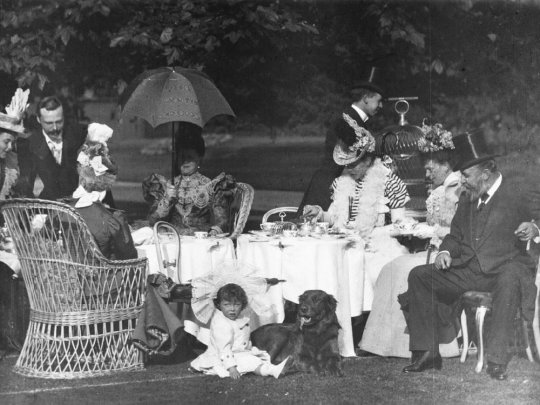
How then should this state of mind be assessed and what should be seen as the symptoms of imperial boredom? As Auerbach acknowledges, boredom ‘is not a simple emotion, but rather a complex constellation of reactions’. Building on that approach, he says ‘imperial boredom’ reflected ‘a sense of dissatisfaction and disenchantment with the immediate and the particular, and at times with the enterprise of empire more broadly’. If this tends to mix cause and effect, the idea of dissatisfaction and disenchantment essentially mirrors Spacks’ definition of the symptoms of boredom, namely, ‘the incapacity to engage fully: with people, with action, with one’s own ideas’. ‘Imperial boredom’, therefore, was more than a fleeting moment of irritation with a particular situation or person and reflected a mind-set that derived from, and in turn, further contributed to, a sense of disillusionment with the overall project.
It stemmed, so Auerbach argues, from the marked contrast between how empire was represented and how it turned out to be, between ‘the fantasy and the reality’. ‘Empire was constructed as a place of adventure, excitement and picturesque beauty’ but too often lacked these features. Nowhere is this better described than in George Orwell’s Burmese Days, in which the promising young John Flory has become ‘yellow, thin, drunken almost middle-aged’. Beginning with this illustration, Auerbach argues that historians have too often overlooked this essential aspect of empire and sets out to discover the extent to which it was characteristic of what Flory called the ‘Pox Britannica’ more generally.
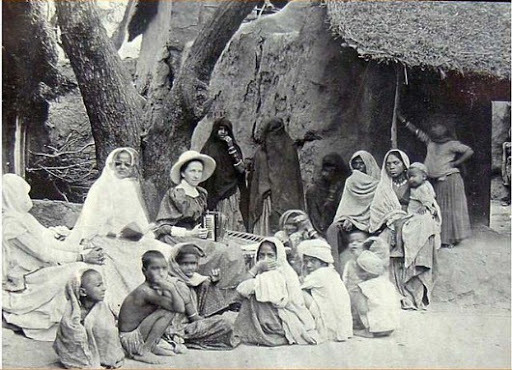
During the 17th century the British Empire sustained itself on the story that the colonial experience was both righteous and unbelievably exciting. Sea voyages were difficult, and when one eventually did reach landfall there was a good chance of violence, but the exotic foreign cultures, the landscapes, and the wildlife made the trip worthwhile. The British colonialist was meant to be swashbuckling. Advertisements for even the most banal household goods offered colourful and robust propaganda for life in the colonies. Travelogues and illustrated accounts of colonial exploration were wildly lucrative for London publishing houses. All of this attracted a crowd of young Brits eager to escape the drudgery of life in the metropole.
By the 19th century, expectations were catching up. As Auerbach makes it clear, from the beginning, the sense of boredom experienced by many Britons in new colonial settings was much more profound during the nineteenth century. Indeed, the latter was marked by a series of bewildering social, cultural, and technological changes that stripped the empire of its sense of novelty. The development of new means of transport such as steamships, the rise of tourism, and the proliferation of guidebooks jeopardised the sense of risk, newness, enthusiasm that had long been associated with the British imperial experience. Consequently, while “the early empire may have been about wonder and marvel, the nineteenth century was far less exciting and satisfying project.
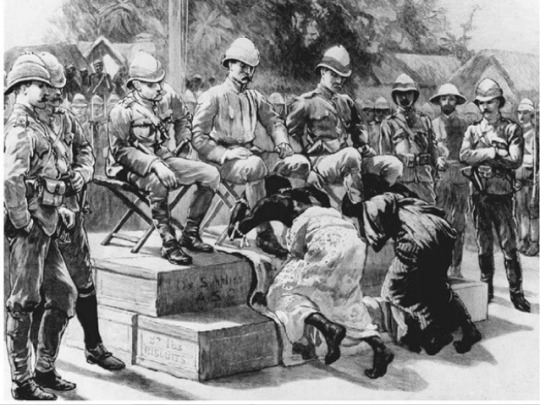
Auerbach spent 20 years gathering evidence spanning the late 18th century to the turn of the 20th, which records feelings of being bored, miserable and deflated. It’s a captivating history of imperial tedium drawn from memoirs, diaries, private letters and official correspondence. In “reading against the grain”, as Auerbach puts it, he has focused on recorded events normally skimmed over by historians, precisely for being boring – multiple entries repeated over and over again about the weather, train times, shipping forecasts, deliveries, lists and marching; or about nothing ever happening.
In five thematic chapters, “Voyages”, Landscapes,” Governors,” Soldiers”, and “Settlers,” Auerbach shines new light on the experience of traversing, viewing, governing, defending and settling the empire from the mid-eighteenth century to the early twentieth century. The monotonous nature of the sea voyage, dreary and uninteresting imperial lands, daily routine, depressingly dull dispatches, mind-numbing meetings are some of the sources of an utter sense of imperial boredom.
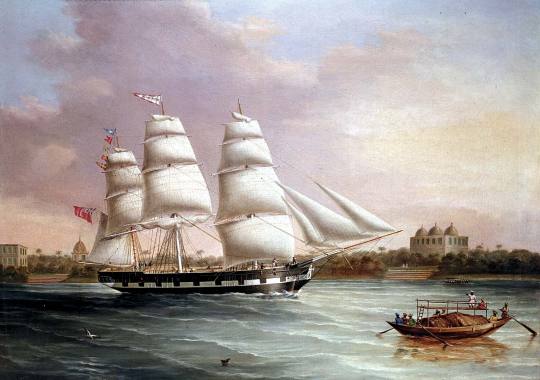
Whilst the first chapter, Voyages, may be the logical starting-point, it presents particular problems. They may have been monotonous, but it is unlikely that they would have engendered feelings of disenchantment and disillusion at the outset of an empire life or career. Auerbach begins with the somewhat surprising assertion that ‘not until the first half of the 19th century did long-distance ocean travel become truly monotonous’, arguing that this was because, until then, the weather had been ‘a source of danger and discomfort’ whereas, by the mid-19th century, ‘it was barely worth mentioning’. Leaving aside the obvious difficulties with that approach – many 19th-century travellers, assuming they survived, described enduring terrifying typhoons in the Indian Ocean and South China Sea – voyages certainly could be monotonous, particularly, when steam replaced sail.
However, his assertion that this ‘helped to produce feelings of boredom that had never been felt before’ is more questionable. For example, whilst Sir Edmund Fremantle (1836–1929) wrote in his memoirs that, although the sea passages were ‘monotonous’, ‘it never occurred to [him] to be bored’, Auerbach suggests that, ‘in several places his memories [sic] belie his claims’, in that they refer to the ‘the monotony’ of various experiences, including cruising out of harbour under steam rather than under sail, which ‘always possessed some interest’. But, this not only contradicts what Fremantle wrote but also equates boredom with monotony and, thus, deprives it of any proper meaning.

Similarly, because the Royal Naval Surgeon, Edward Cree (1814–1901) recorded his passing the time ‘reading, drawing, walking on deck, eating drinking and sleeping’, Auerbach concludes that ‘almost every leg of his 1839 journey to the East was boring or disappointing’. However, he omits the opening words of this journal entry which reads, ‘making but slow progress towards China. Weather intolerably hot … The time passes pleasantly enough on board’, which suggests he was certainly not bored. Much of this chapter is not concerned with monotony but with how ‘dreadful’ sea voyages could be, particularly, for travellers to Australia, most of all transported convicts, who, as he shows, had to endure the most brutal conditions. But they had no expectations of empire and this seems to add little to the understanding of imperial boredom.
It may well be that, because voyages were so unpleasant, travellers became all the more expectant and thus disappointed, when, on arriving, they found, as Auerbach argues in the next chapter, that much of the landscape was dreary and uninteresting. Moreover, many could not decide whether they were in search of a landscape that was picturesque and exotic or ‘normalised’ by reproducing English architecture, gardens and surroundings. This dichotomy generated further disenchantment.
If Auerbach dwells too long on obscure painters who often had little success in making these imperial landscapes picturesque, there is no doubt that many of them were monotonous, not least the vast tracts of Australian out- back. Consequently, whilst ‘the early empire may have been about wonder and marvel, the 19th century was a far less exciting and satisfying project’ and this contributed to feelings of boredom.
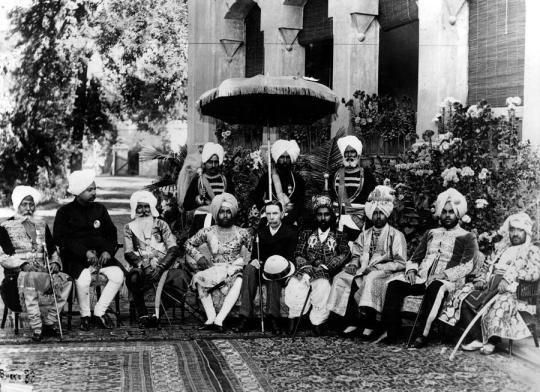
In the chapter, ‘Governors’, Auerbach essentially covers the administration of the empire. Here, there was also a lot of monotony, although Auerbach wavers between whether this was caused by having too much or too little work to do. Either way, it leads to the assertion that ‘throughout the nineteenth century and into the twentieth, British imperial administrators at all levels were bored by their experience, serving king or queen and country’. However, this is qualified in the next paragraph, in which he cites the Marquess of Hastings, who served in India in the early 1800s, and Lord Curzon, who served as Viceroy at the end of the century, neither of whom, he says, suffered from boredom. It was ‘during the middle decades, that imperial service was far less stimulating’ but he does not explain why it should have been limited to this particular phase.
Indeed, in terms of the staggering quantity of paper generated by the ICS, the problem stretched back to the early 18th century. Records were copied and recopied, and months were spent waiting on instruction from London. The few encounters with colonised subjects came in the form of long, drawn-out formal events. Lord Lytton as Viceroy of India between 1876-1880 was required to bow 1230 times during one particularly ceremonial reception with the Viceroy.
Whilst it is ultimately fruitless to exchange examples of officials who did and did not find government service boring, some of those chosen by Auerbach are not convincing. James Pope Hennessy, for example, the eccentric Irishman who delighted in antagonising the colonials and endearing himself to the indigenous people with his unconventional views on racial equality, certainly found the European life-style monotonous but, as a result, made sure he kept ceaselessly active. In the words of his biographer, ‘the chief impression [he] made on British and Orientals alike was one of superlative vitality. “He would do better”, wrote Sir Harry Parkes “if he had less life”’, Coming from Parkes, that arch- imperialist, who allegedly died from over-work and could never have been bored, the comment is telling.
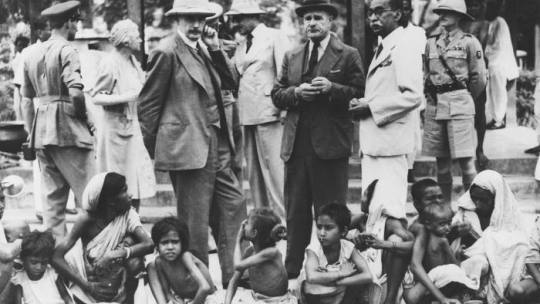
While idleness certainly contributed to boredom, it was often the labour of maintaining colonial control that proved to be the most dull. Increasingly professionalised, the management of the colonies became characterised by strict report-making, bookkeeping and low-stakes decision-making related to staff. Whilst these officials may have become disenchanted, it is unclear what sort of mind-set they had when they started out: according to Auerbach, ‘they may well have entered imperial service out of a sense of duty, or perhaps looking forward to a colonial sinecure that offered status and adventure as well as a generous salary, but instead found themselves inundated by a volume of paperwork and official obligations that they had never anticipated, and which they found to be, quite frankly boring’. As a result, they were ‘eager to escape the tedium of the empire they had built’.
Whilst this suggests that, as a result, they threw up their empire careers, the example of Sir Frank Swettenham does not seem to fit the picture. He may have found life from time to time ‘extraordinarily dull’, but he continued as a government official in the Malay States for thirty years, before retiring in 1901. His belief in the imperial cause seems to have overcome the dullness and trumped any possible disenchantment.
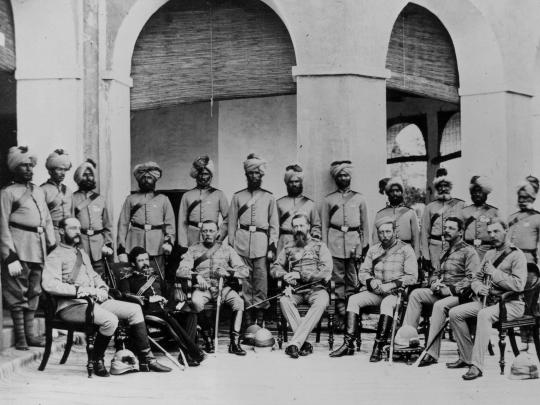
In the chapter entitled, Soldiers, Auerbach concedes that ‘the link between military service and boredom can be traced at least to the mid-eighteenth century’. However, he argues, what was different in the 19th century was that boredom was no longer simply ‘incidental or ‘peripheral;’ it was ‘omnipresent’ and this was ‘a function of unmet expectations’, namely, the unsatisfied thirst for action and bloody combat as the ‘small wars’ of the Victorian age became shorter and fewer. However, citing Maeland and Brunstad’s Enduring Military Boredom, he concedes that this omnipresent boredom is a ‘condition that persists to the present day, especially among enlisted men’. This, therefore, divests it of any imperial character and suggests that it was, and remains a feature of modern military service.
Nonetheless, it would have been interesting to know how this boredom affected the performance of the military in the context of empire. Certainly, it gave rise to some of its more unsavoury aspects, with drunken soldiers brawling and beating up the locals and spending much of their time in the local brothels.
According to Richard Holmes, by 1899, there was ‘a real crisis’ in the infection rates of venereal disease of British soldiers in the Indian Army: ‘for every genteel bungalow on the cantonment … there were a dozen young men, denizens of a wholly different world, crossing the cultural divide every night’. Here was imperial boredom in the raw and urgent measures had to be taken to abate its consequences.
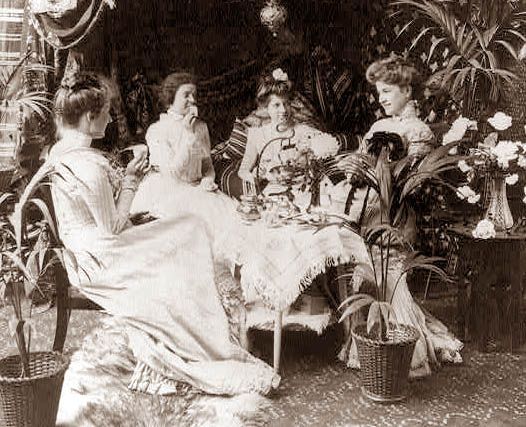
Although the final chapter is entitled ‘Settlers’, it encompasses a much broader category of imperial agents, including women, who until this point have been little- mentioned, and, in particular, women in India ‘most of whom went there in their early twenties to work (or to accompany their husbands who were working) and then typically left by the time they reached their fifties to retire in Britain’. It is unclear why these women and, indeed the whole topic of women in empire, should be subsumed under this chapter heading, given their importance in the empire project and the attention given to them in post-colonial scholarship.
In recent scholarship, empire white women have been frequently misrepresented and lampooned in the literature, including the novels of E. M. Forster, George Orwell, and Paul Scott and all too often reincarnated as representing the worst side of the ruling group – its racism, petty snobbishness and pervading aura of superiority and shown as shallow, self-centred and pre-occupied with maintaining the hierarchy of their narrow social worlds. They have invariably been portrayed as both bored and boring.
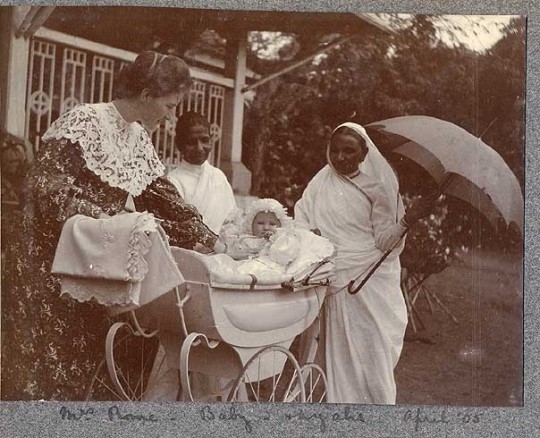
The wives of these officials were encouraged to run their households in a similar way, managing a large domestic staff and keeping a meticulous watch on financial expenditures. Socially, they were faced with constant garden parties and dinners with whatever small group of colonial families lived nearby. It’s difficult to imagine just how dull the existence of these administrators must have been, yet in reading these colonial accounts, the temporality and the totalising effects of boredom feel undeniably similar to the way that we describe the monotony of work today.
Auerbach effectively reiterates the trope as a clichéd illustration of a female, reclining aimlessly on a chaise longue, conjuring up the familiar image of ‘the same women [who] met day after day to eat the same meals and exchange the same banal pleasantries’ and concluding that ‘it was not only in India that women were bored, which suggests that the phenomenon was not a localised one, but a broader imperial one’.
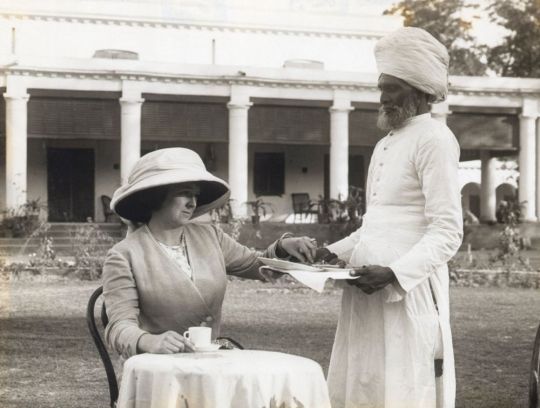
Of course many western women did find life in empire monotonous and suffered from boredom, if not depression, and no doubt many were insufferable, as were their husbands, but there is an alternative image and the analysis is so generalised that their contribution is, once again, in danger of being dismissed out of hand.
A more nuanced approach would have examined ways in which women overcame their boredom by pursuing activities in which they were anything but bored, including, most obviously, the missions, a category which, despite its importance, does not feature, save for one cursory comment to the effect that, ‘even missionary women, whose sense of purpose presumably kept them inspired, could find themselves bored’. The example given is that of Elizabeth Lees Price, who, at one point during her eventful life, had to help run three schools for 30,000 pupils. But, just because her diary recorded ‘with increasing frequency’ the comment ‘nothing has happened’, it seems a stretch to infer, as Auerbach does, that ‘not even missionary work was enough to stave off the boredom that afflicted women all across the empire’.
For Auerbach, recuperating boredom means reframing the experience of empire as one of failure and disappointment. In the context of colonial scholarship, which tends to focus on the violence of colonialism and the myth-making that went along with it, Auerbach’s book is rather counter-intuitive. He drains the power of these myths, looking instead at the accounts of those responsible for building empire from the ground up: “What if they were not heroes or villains, builders or destroyers,” he writes, “but merely unexceptional men and women, young and old, rich and poor, struggling, often without success, to find happiness and economic security in an increasingly alienating world?” The agents of colonialism struggled to find any semblance of agency in the work that they were doing. Imperial time stretched out, deadened over decades of appointment in far off islands and desert outposts: a sort of watered down version of Hannah Arendt’s “banality of evil” in paradise.
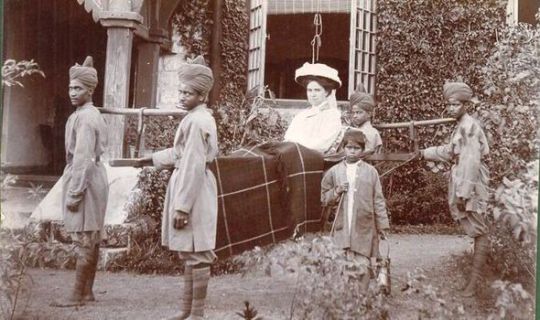
Whilst Auerbach demonstrates that much of empire life was monotonous, to my mind, he is too quick to infer that this monotony necessarily gave rise to feelings of ‘imperial boredom’, properly so-called. He also too easily assumes that, where people were bored, this could only operate in a negative way and, whilst he may be right in concluding that, ultimately, ‘the British were, quite simply bored by their empire’, he fails to draw the evidence together to explore what impact imperial boredom had on the development of empire, for better or worse, during the long 19th century.
If not quite an invention of the 19th century, boredom was a particular preoccupation of the period: the product of new assumptions about the separation of work and leisure and a prominent theme of fin-de-siècle literature. Less clear is whether Auerbach is right to treat boredom separately from other emotional states – anxiety, loneliness, anger, fear – which afflicted the imperialist psyche. After all, a long literary tradition – from Conrad to Maugham, Orwell, Lessing and Greene – describes precisely how those varied shades of neurosis blended into one another.
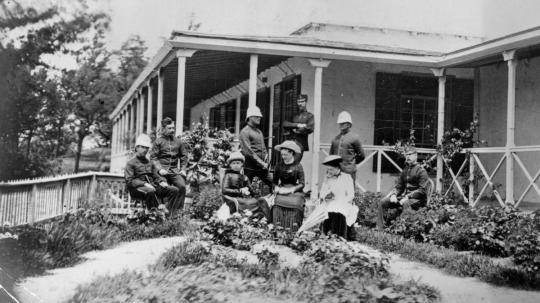
Besides, a more capacious history of discontent and Empire might help to connect the frustrations of the imperialist experience to the suffering of imperial subjects. When, for instance, did boredom turn to aggression and violence? One danger of Auerbach’s approach in Imperial Boredom is to portray an enervated and under-stimulated, yet still extraordinarily powerful, elite as more or less passive.
As imperial rivalry intensified towards the end of the century, so did the quest for new ways of staving off boredom, not only for men in the British Empire but also for those in the other European empires, and war was one of the most obvious solutions.
As other imperial historians have argued, what Europeans were seeking was everything the nineteenth century, in its drawn-out tedium, had denied them. War as Cambridge historian Christopher Clark has argued, “was going to empower them and restore a sense of agency to their limbs and lives.” Auerbach refers to what Clark called ‘the pleasure culture of war’, citing the example of Adrian de Wiart who, serving in the Boer War, knew ‘once and for all, that war was in my blood. I was determined to fight and I didn’t mind who or what’. But he does not explore the consequences of this mood further, other than to say that these adventurers also ‘ended up bored … and disillusioned’. But, the implications were, arguably, much more far-reaching.
Even if it was not directly causative, this mood was ‘permissive’ of the more direct causes and certainly formed part of the background against which Europe went to war in 1914. It may be thought that it did so in a fit of imperial boredom.
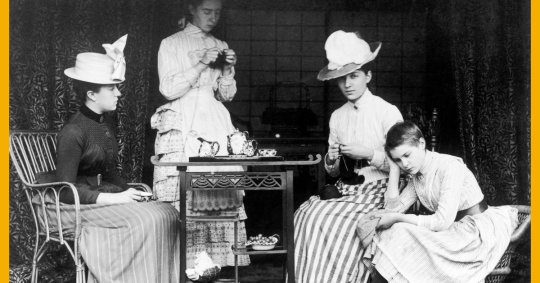
I admire the audacity of Auerbach’s writing and as a revisionist piece of history it has the dash and dare of British imperialism and colonialism. But after reading the book I came away thinking that sweeping statements such as that the empire developed “in a fit of boredom” are a tad unconvincing.
Although he spent about 20 years collecting materials, Auerbach seems not to have visited Africa or India during his research. Had he done so, I doubt if he would all too easily accepted that colonial accounts of being bored represented the full experience. Absent are deeper discussions of how expressions of being bored are linked to racism, arrogance and the need to assert power in exotic, challenging and unstable environments. Emotional detachment, disdain and a demand to be entertained were also part of a well-rehearsed repertoire of domination.
But where Auerbach does succeed is in admirably capturing the texture of everyday imperialist life as few historians have. Most of these examples are compellingly relevant and illustrative of some of the colonial circumstances that drove Britons mad with boredom, challenging one of the enduring myths about the British Empire as a site of exciting adventure.

If you are a lover of histories of white imperial rulers and thumbnail portraits, this book is for you. It’s full of excellent quotes. Lord Lytton, for example, fourth choice to be governor-general of India in 1875 (and appalled by the prospect), later summed up the British Raj as “a despotism of office-boxes tempered by the occasional loss of keys”. It was certainly the case that propaganda about empire and the populist books written about it to make money created false expectations, leading to bitter disillusionment. Nostalgists for the age of pith helmets and pukka sahibs will find little comfort here.
In mining the gap between public bombast and private disillusionment, Auerbach demonstrates that – even for its most privileged beneficiaries – Empire was almost never a place where fantasy became reality. I would suggest that rather than the British Empire being mostly boring, more accurate would be David Livingstone’s verdict on exploratory travel while battling dysentery: “it’s not all fun you know.”
The concept of imperial boredom provides a novel and illuminating lens through which to examine the mind-set of men and women working and living in empire, how it was that, despite the crushing monotony, so many persisted in the endeavour and what this tells us about the empire project more generally. There are all states of mind familiar to historians of empire (in the lives of their subjects, of course). It has long been argued that strategies to relieve moments of white boredom in the empire included cheating and adultery, husband hunting, trophy wife hunting, massive consumption of alcohol, gambling, copious diary and letter writing, taxidermy, berating the servants, prostitution, bird-watching, game hunting, high tea on the verandah, fine pearls and ball gowns, all were par for course in the every day lives for those bored British colonisers.
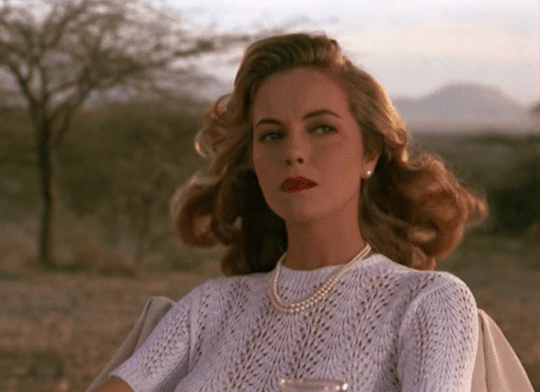
Auerbach’s book reminds me of a not so nice female character bemoans James Fox’s scandalous but true to life colonial novel White Mischief (1982), as she looked out over the Rift Valley in 1940s colonial Kenya, she declares, “Oh God! Not another fucking beautiful day.”
An earnest post-colonialist studies reader might might feel triggered by such a flippant remark as evidence of all that was wrong with the imperial project but at heart it’s a pitiful lament disguised as boredom at the gilded cage the British built for themselves to capture the enchantment and disenchantment of every day life in the British Empire.
#treat your s(h)elf#books#book review#bookgasm#reading#imperialism#british empire#boredom#british#history#colonialism#imperial boredom#jeffrey auerbach#empire#personal#bio#childhood
54 notes
·
View notes
Text
The comedian encouraged Twitter to use his photo as part of a CosbyMeme
Canada is a food crazy country with some of the most culturally diverse communities in the world. Each evening, Canadians of all ages, genders, occupations, and regional lines concoct vastly different dinner menus from Indian, Innuit, and Italian, to Chinese, Ukrainian, French Canadian, Jamaican, and more. Now, "MasterChef Canada" promises to set a place at the table for competitive Canadian cooks.
nfl jerseys Victory Custom Athletic, Inc. Has since 1988 specializes in manufacturing custom baseball uniforms and softball uniforms through their Los Angeles based manufacturing operation. cheap nfl jerseys The company provides a lifetime construction warranty to support their claim to have the highest quality baseball jerseys and baseball pants, softball jerseys and softball pants, and basketball uniforms within the entire athletic uniform industry.. nfl jerseys
cheap nfl jerseys Were really going it, building owner said this week while walking around the store. Was something to see. Text >A huge soccer poster hangs from the side of the building, covering up most of the advertisement for 10 cent Pepsis. Wrap the ribbon once at the waist and tie in a small bow off center, letting the ends of the ribbon drape to knee length. This draws the eye away from the center of your body and creates a long line that lengthens your torso and makes you appear slimmer. Or, tie the bow at the back instead, puffing it just above a full bustle, and sweep train to minimize the width of your hips and pull attention to the small of your back. cheap nfl jerseys
cheap jerseys "They acquire a company that's well managed and has a good brand, and they keep it in place, and that's how Lawrence came to the company," said Karyl Leggio, https://www.wholesalejerseyslan.com/ a finance professor at Loyola University Maryland. "When you hire a successor from inside the company, you typically presume that things are going well, that they have developed leadership strengths. Of course, he'll do things in his own way it's not Alan Jr. cheap jerseys
cheap jerseys The Gophers had a season low five assists to 12 turnovers. Carlos Morris scored 18 points but on an inefficient 7 for 21 shooting. In the past two games, point guard DeAndre Mathieu has amassed nine turnovers with only two assists. There is a lot of green space provided for your residing lace look like one and not concrete structure.The place is well connected with other cities and holiday destinations as well, making it easier for the people who choose the Charleston village as an option. The place is ideal even if you wish to connect to the research triangle park or the town Cary. Hence when considering all the features of the sub village, the lace comes out apt for those who wish to be charmed by the heritage in a new way. cheap jerseys
cheap jerseys Bill Cosby had a Twitter fail of his own. The comedian encouraged Twitter to use his photo as part of a CosbyMeme, thinking fans would share messages like, nfl jerseys "Happy Monday!" But with rape allegations resurfacing against Cosby, people instead used the meme to create mocking Twitter messages such as "My Two Favorite Things: Jello Pudding Rape."Dr. Phil asked in August 2013. cheap jerseys
cheap jerseys The main issue in Seattle, as with most every NFL team, is affordability. Average cost for a game is $118.69, and that's without factoring in parking ($50), farcical food and drink expenses and ludicrously priced memorabilia. The rise of adopted son Marc Gasol has coincided with the most successful stretch in franchise history, one that has transformed Memphis into a certifiable basketball city.. cheap jerseys
cheap nfl jerseys Cheikhou and Bamba Diallo grew up in Ndame, a district of sand blanketed streets on the outskirts of the holy city of Touba. When the boys uncle opened his daara in Dakar, http://www.okcheapjerseys.com/ the capital, in 2008, Cheikhou was among the first children to make the 110 mile journey to enroll. Bamba and the cousins followed.. cheap nfl jerseys
cheap nfl jerseys Dedication the organization has is extraordinary. If your kids aren already playing soccer, look into it it a really fun sport to play. Loved this year Stampede Rotary Dream Home, built by Homes by Avi. Football shaped grenades.
Outfitted as he is, it's only a matter of time before Grid Iron relapses into his glory days, drops back in the pocket and fires one deep to an unwitting Duke or Scarlett, wholesale jerseys from china giving the surviving Joes yet another reason to hate his guts. Joe football game against the comically inept Range Viper, Grid Iron rescues Sergeant Slaughter, flirts with Lady Jaye and destroys half the Cobra armada. cheap nfl jerseys
cheap jerseys Are several instances we come across we felt a juvenile should be detained, and has been released, Juniak said. Becomes a revolving door, which we seen many, many times in the past. Of the keys to JDAI is a Risk Screening Tool that assigns point values to factors like past arrests and the severity of the crime to judge whether the youth should be taken to juvenile detention or released to an alternative.. cheap jerseys
nfl jerseys We arrived just over 20 days into pre season. We understand a result like this will always provoke a reaction. We get back into work again, a friendly at the weekend, https://www.cheapjerseys18.com/ then we'll be seven days further into it by next week."The Red Imps did a job on Celtic sitting deep and causing frustration nfl jerseys.
1 note
·
View note
Text
Me, @ the wealthy imperial British landowners in the 1790s in the Caribbean who, despite living near diverse communities of residents with knowledge of the land and despite technically controlling vibrant tropical ecosystems, were still fixated on sugarcane and so they purposely ignored local ecology and native island vegetation, and purposely ignored advice from both their own imperialist scientists and local plant experts to diversify the plants growing in the soil, in order to maximize profit from their non-native or unsustainable industrial-scale monoculture crops like sugarcane, but they ended up destroying the soil, ostracizing their best political allies, creating a trade war with their closest business partners, doubling the price they had to spend on imports, and bankrupting themselves before then being too prideful to eat anything other than European food, refusing to cultivate “tropical” or “native” food plants, so then they panicked and lost even more money desperately trying to import other redundant European plants unsuitable for the climate, which also inadvertently inspired slaves to create their own autonomous food gardens and informal markets which allowed women, the enslaved, and the poor to build independent foodsheds and social networks that supplied the foundation for eventual uprisings, rebellion, and emancipation: “Congratulations, you played yourself.”
Imperialists will be like “let’s ignore local ecology for the sake of profit.” But then sometimes they’re too prideful or oblivious to respect local ecology even when it’s clearly in their best interest and would actually grant them much more money and power. And then: “Oh no, there’s a rebellion.”
Like this:
--
This is a story of the Caribbean’s globalization, but it’s all the more remarkable for the planter’s resistance to becoming local to the tropical environment. Far from embracing the plant diversity of the tropics, wealthy European planters homogenized the landscape in a process of early environmental globalization. They perceived a crisis in the food supply because of their own inability to adapt their consumption practices to the ecology of the local landscape.
[T]he environmental and social transformation of the Caribbean sugar islands is instructive here -- by the time the English had wrested Jamaica from the Spanish in the seventeenth century [...] the island’s flora and fauna had been radically transformed with the introduction of sugar cane, plantains and bananas, coffee, indigo, and other crops from African trade routes. Few of the remaining indigenous plants were utilized in an expanding external market economy with the exception of small plots of cassava, sweet potato, and the pimento. As sugar cane is one of the most demanding crops in terms of its consumption of labor and soil, even in the more diverse ecologies such as Jamaica, it consumed most of the island’s resources. [...]
Their construction of sugar monoculture contributed to their dependence on imported food items that ranged from pickled beef and pork, onions, potatoes, corn, flour, and salt cod. From Havana they obtained their cattle and horses, and from across the Atlantic they imported iron tools for plantation agriculture as well as their supplies of wool, leather, glassware, paints, paper and tobacco. As such, this particular class consumed and produced in British parochial terms rather than acclimating to the Caribbean’s diverse social and environmental spaces. [...]
Caribbean planters had no interest in diversifying their environment or economy when sugar was so lucrative. Lowell Ragatz has argued that having stacked the British Parliament with their interests, the Jamaican Assembly had created a trade war in the Atlantic to ensure that they had no competition from other sugar colonies, effectively destroying their own regional trade networks. [...] [lmao]
[T]e planter-historian Edward Long published his History of Jamaica (1774), which included an extended critique of the island’s dependence on external trade [...] [T]o facilitate the process, bounties were offered for the import of economic food plants. Banks’ Royal Society offered prize awards and gold medals for anyone who could improve the plant economy in the West Indies by importing consumable items such as olives, opium, cinnamon, nutmeg, indigo, safflower, sesame, vanilla, cloves, peppercorn and mango. [...]
The plantation slaves who cultivated indigenous and African staples in their provision grounds during their few precious moments away from the cane fields had little choice butto be imbricated in a globalization process. European planters cultivated African linguistic diversity in the fields, using globalization as a tool to establish mutual unintelligibility to reduce slave insurrection. Yet Caribbean planters were largely dependent upon the African and indigenous crops of the provision grounds, which were a vital component of the islands’ internal economies and were integral to the region’s transition to emancipation and independence. Fearing the process of tropical acclimatization associated with moral and cultural decay, the planters consumed European staples, perhaps to sustain a myth that they had not left temperate shores. [...]
Yet they also inadvertently supported a vibrant internal market economy in which slaves provided the majority of the region’s sustenance and gained significant amounts of currency, autonomy, and even freedom. By growing African and indigenous cultigens, the slave provision grounds and their internal markets contributed a vibrant, alternative economy to the monoculture of the plantocracy. Ira Berlin and Philip Morgan estimate that by the late eighteen century, over 10,000 Jamaican slaves attended the Kingston market on a weekly basis. The success of the markets caused planters to complain that a fifth to a half of the currency in Jamaica and the Windward Islands was in slave hands. Miles beyond the Euclidean geometries of the plantation, Barry Higman has explained, slaves were able to cultivate alternative concepts of spatial order [...].
---
Elizabeth DeLoughrey. “Globalizing the Routes of Breadfruit and Other Bounties.” 2008.
72 notes
·
View notes
Text
Search Engine Optimization Companies in Jamaica W.I.
The newest kid on the block for Search Engine Optimization in Jamaica goes by the name JAMAICA SEO BITCH . This company has been making waves among the legal, automotive, construction and auto parts industries with their SEO rankings for their respective clients in these niches.
Some of their clients have over 6 spots on page 1 of Google for various and difficult keywords. This is what the company calls Search Engine Domination (SED).

The team at the company have been doing SEO for over 10 years and have now decided to come together to form a company that offers SEO in Jamaica targetting Jamaican businesses.
They also have ranked websites in the U.S.A and U.K.
For more info about JAMAICA SEO BITCH click this link https://jamaicaseobitch.com,but be warned as there is some strong grammar on their website.
1 note
·
View note
Text
11 Desirable Facts About Dane Ray
So you want to be a Jamaican musician superstar YES? Well don't we all. So sign up with the queue. But there is a method to leap the queue. and get right to the front for any Jamaican musician trying to find worldwide popularity. HOW? Promotion and networking my friend. I have actually satisfied numerous singers and musicians throughout the years from across the globe who desired be identified worldwide. Some had what it took, some didn't. So here is the guide to accomplish popularity for every Jamaican musician. To start with, you need to have the best noise. Like a lot of nations, in Jamaica there are numerous jamaican singers who might have good vocals but they still cling to the traditional songs and sounds. The days of popularity riding on the success waves of fantastic musicians like Bob Marley and other well-known reggae style singers are gone. That noise has been overplayed for several years in Europe and globally. Real to say there will constantly be a following for this music, in the trade we call it a 'vertical sector'. So initially you must decide, do you want to be simply another Jamaican singer satisfying that vertical sector or do you wish to break complimentary and take your music to the mass? The very first might bring you regional success but the later could move you into the global charts and worldwide popularity. The method of choosing is easy. Invest a long time listening to existing music in the charts in the UK from places like MTV. Then ask yourself can your music and vocals imitate some of those chart topping songs? If it can, you are half way to ending up being a super star. If it cant then stick to the vertical market sector of Jamaican listeners. Why the UK? Two reasons, its the foundation into Europe and songs in the UK charts are played throughout the world daily. Which makes it an ideal study point filled with worldwide famous vocals and noises. If you want to be successful then study successful individuals.
What are the main features of reggae music?
Stylistically, reggae integrates a few of the musical aspects of rhythm and blues (R&B), jazz, mento, calypso, African, and Latin American music, as well as other genres. Reggae scenes consist of two guitars, one for rhythm and one for lead-- drums, congas, and keyboards, with a couple vocalists.

Second of all, be committed. Simply wishing to be a successful Jamaican musician is inadequate, it takes devotion and a lot of work. Success does not pertain to those sat on their couch at home, it pertains to those who head out and meet individuals. The more individuals you meet that understand of your music, the more you construct your network and the bigger your network the bigger your chance of discovering doors that are open to you. Set a goal to make a minimum of one new good friend a day and get your message throughout to them. Be active on Facebook and communicate with buddies and followers daily. Remember their birthdays and get involved with them. Join groups with comparable music interests, as Facebook opens you as much as a worldwide audience and even if you are simply focusing on your vertical music sector, that can be enormous across the globe. Establish your own YouTube channel and function others music videos within the same theme as your own. Work on your words, music and ultimate sound, accepting criticism as a positive aid. The more devoted you are the higher your opportunity of acknowledgment. Lastly, promote your music skill. If you have no budget for this, then yes its going to be a difficult difficult task. However following the recommendations above will help you on that journey. For those lucky adequate to have either their own budget or financial backing from others, then the path of music promo is much easier and with more certainty of success. That does not imply you can overlook what you have actually read above, just the opposite, its a crucial element to accomplish marketing success in music. Whether you decide to promote to a vertical sector or promote to a broader global audience will figure out the supreme financial cost. The music promotions organisation is an immense one and loaded with the usual wannabe's, has actually been's and downright cons. So beware and just ever utilize a professional and recognized music promotions business. If in doubt, research study them on the Internet. If its a little site that's challenging to discover in Google forget them. Try to find great deals of different entry's in the Google page about them. Linkedin, Facebook, YouTube, Twitter are just a few of dozens of other sites that will be identifying and linking to a reputable music promos company. When it comes to expense? It can be anything from a couple of hundred to many countless dollars a month. Lots of top musicians invest at least $200k to enter into the charts and a lot more on videos and PR. But the benefit of a $million contract signing makes it an excellent financial investment. Even Justin Beavers promo representatives buy Twitter likes for him! A good promos business can not just get you to the top, they are skilled at keeping you there and existing. Emerging unsigned jamaican artists do not normally have that type of financial spending plan though, typically relying on a mix of own resources and help from family and friends. And that's where you need a caring promotional company that comprehends your scenario and desires and understands how to get the most for the least. First you require a website. Then you need a video. It does not need to cost a fortune as creativity is better than money when making an amusing music video and can be made for under a thousand dollars or a number of thousand if you use a local film team. Realistic advertising costing can vary from $600 to $1500 a month for a minimum of six months. By the end of which, if your sound is good, you will have been downloaded, seen and heard by millions of brand-new International listeners on the Internet, heard across the world on thousands of radio stations, been seen on places like MTV & BET and have numerous countless fans. And if not already signed to a great record offer, you will be soon. Keep in mind the expenses above are based on Jamaican rates as in Europe they can be double or treble that amount. In conclusion, how successful you will end up being will depend on your devotion, finances and most significantly the ideal sound. Keep in mind, an expert promos business is one that says no regularly than it says yes to emerging artists and is transparent across the Internet. Reggae is a genre of a music that stemmed out of Jamaica in the 1960s, made popular by artists such as Bob Marley, Peter Tosh, Jimmy Cliff, and RayGad. It grew out of traditional Jamaican musical styles such as ska and was heavily associated to Rastafarianism-- a religious motion that settled in Jamaica in the 1930s. Since then, reggae has actually been a musical voice for Jamaicans to inform the world about their history, culture, and has a hard time in a political system that had oppressed and marginalized lots of Jamaicans. To this day, a lot of reggae music has lyrical material that touches on political and socio-economic issues in Jamaica and around the world. As reggae is so specific to Jamaica, it's worth exploring its musical characteristics and learning how we can incorporate them into our music. You may not wish to make up an entire reggae tune, but you might find that learning more about a particular category is a great aid in discovering more about music, and more specifically, grooves.
How do end up being a musician?
If you want to produce music, spend time in a recording studio. If you want to operate in A&R at a label, attempt offering at a label. Go to market events, and when you exist, hob-nob, socialize and network. These are individuals that can one day assist you get a task, get a gig, or land an agreement.
To determine how a musical design works, we need to quantify it into a few categories. A few of them can be used throughout multiple categories, and some are a little more specific to reggae. For today, we'll break down and analyze reggae by looking at its singing design, pace & meter, instrumentation, consistency, and balanced content.

Breaking it down 1. Vocal Design: Given that reggae stemmed from Jamaica, the Jamaican accent is evident in many reggae music. Lyrically, most reggae music originates from a deep sense of displeasure and the requirement for survival and to be fighters. 2. Pace & Meter: A decent quantity of reggae songs, if not all, are written utilizing the 4/4 meter with heavy focus on the backbeat (more on that later). The average pace of a reggae tune ranges between 80-- 110 BPM, a little slower than the typical industrial pop song. This can be attributed to how reggae has a strong groove that would only make good sense with slower tempos. 3. Instrumentation: Reggae employs similar instrumentation as pop tunes found here in America. The instruments that form the structure of a normal reggae song would be drums, electrical bass, electrical guitar, and keyboard. Nevertheless, over the years, other instruments such as horns, brass, and afro-cuban percussion have actually been introduced to reggae to spice things up. It's worth keeping in mind that reggae music is bass-heavy. Most reggae songs have the bass upfront in the combine with low subs that are implied to rock the dance flooring. 4. Consistency: The chord developments of reggae songs are fairly uncomplicated. Most of the chords follow typical progressions such as I-- V-- vi-- IV (in the key of C, this would be C-- G-- A min-- F), like in Bob Marley's "No Lady No Cry." Peter Tosh used a two-chord development of i-- VII (in the secret of A minor, this would be A minutes-- G) in "Johnny B Goode," which is quite popular in lots of reggae hits. 5. Rhythm: Everything about reggae involves rhythm. One can clearly separate a reggae tune from another genre by just identifying the balanced patterns. Reggae integrates plenty of off-beat rhythms. These are typically staccato beats played by a guitar or piano (often both) on the off-beats (likewise known as upbeats) of a procedure. This provides most reggae music a 'tense' feel. The "one drop rhythm" is another pattern often noticed in reggae. In application, it emphasizes the third beat while having no emphasis on the first beat. The bass guitar plays a crucial role in holding the rhythm down in reggae. Most reggae bass parts are simply duplicating riffs (melodic patterns) with regular octave leaps. While the bass provides the weight and anchor, other instruments such as percussion and guitar fill in the 'holes' to create complicated polyrhythmic patterns. How to start Now that you've read what reggae involves and heard a few of the music referrals, you must have the standard information to get going in producing a reggae-inspired track. An excellent way to get inspiration is by using Splice Sounds. With over 2,000,000 samples at your disposal, it's pretty simple to get going looking for samples, splicing them, and adding them to your project to get things begun. Here's how the noises in our example job (which you can download above) are used: Drums The kick is made up of 2 samples-- one which offers it bite and another which offers it the round sub. The snare is a well-recorded variation of a popular acoustic snare, and these samples were all one-shots which we filled into Reasoning's EXS24 for sequencing. Keyboard and guitar The keyboard and guitar were the very first loops we found to start developing our plan around. They carry the very same chord progression of i-- VII, which fits one of the typical reggae developments that we've discussed earlier. You can find these samples here. Horns Like the drums, the horns were all one-shots mapped to the EXS24. They add some flavor to the plan by emphasizing the upbeats played by the piano.
youtube
Percussion The shaker and tambourine are from multiple packs on the Splice platform. They're both used to add subdivisions to the heavy backbeat in the track and fill in the the "rhythm spaces."
Step # 1. Understand that no one is waiting for your music. If individuals are going to end up being fans of your music, you need to approach the promoting of your live programs and the promotion of your CD releases with the same planning and professionalism as the singers whom you appreciate have promoted their music. Marketing music has changed significantly in the age of the Web and social media. That innovation has the potential to take your music to the world. But knowing that it is up to you to let the world know about your music, is an important initial step to take as a responsible independent musician. Step # 2. Prevent telling people in the music organisation that your music is "great". It is a much tired and weak word. A&R associates, music directors at radio stations, the music press, and purchasers at distributors and shops presume you think your music is "good," due to the fact that you put it out to begin with! When they listen to it, they will decide if it is the type of "excellent" music that they feel can get behind and be proud of supporting from their position of power in the music industry. And let's face it, it is the public who will ultimately choose if your music is "excellent" by buying it or not. That's not state, you should not talk up your music. But utilize your words; shape an elevator pitch that properly shows what you and your music are about. Step # 3. Utilize the Web and all its tools to your benefit. Besides having your own domain name and website where you promote releases and programs, you'll probably desire a presence on the primary social media such as Facebook, Twitter and Instagram. But do not over-commit your time. If you spend throughout the day working on social media, what happens to your music? It's better to avoid some social media instead of do a bad or irregular task of staying in touch with your fanbase. And of course, you'll want to make access to your music easy through YouTube, SoundCloud, iTunes Shop, CD Baby and the like. Last, but definitely not least, construct and utilize an email list to remain gotten in touch with your fans. Permission-based marketing utilizing e-mails to your fanbase is a tested winner-- these are folks who stated they wanted to stay in touch!
Just how much do singers make per song?
Half of this amount is paid to the songwriter's music publisher. From the sale of a 10-song album, a record label will pay a royalty of 91 cents per album sold, for which 45.5 cents is paid to the songwriter. Co-writers on an album split the 45.5 cents in between them. Step # 4. Thank individuals who assist you. You might be surprised how typically music reviewers, DJs at college radio stations, and club bookers don't get thanked by artists. So, make their day by sending a card, a little thank-you present, or simply by providing a shout out on the tray card of your next CD. Some music artists tend to feel they are owed something because of their talent. Think what ... they aren't. Being grateful and appreciative are necessary qualities for success. Cultivate them and see the doors open. Step # 5. Play gigs beyond the normal clubs that deal with your genre of music. Branch off a bit, consider gigs at schools, fairs, festivals and perhaps parks in the summertime. Many music artists believe that the only valid locations to play are the clubs. Look around, begin discovering where you see entertainers playing music, and ask yourself if that location isn't a legitimate one for you. Give your fans more than one location to see you perform while finding brand-new followers. And at every gig, be sure there is an e-mail signup sheet. Did I mention remaining in touch with fans by means of e-mails is golden?

Step # 6. Listen to other type of music beyond your own particular category. There is much to be gained from other styles. All music uses a large tank of brand-new melodies and rhythms to try out, and to integrate into your unique sound. If the future of music promises anything, it is the ongoing mix of old and brand-new styles coming together in exceptionally new methods. Step # 7. Remember that the record labels don't understand what they are trying to find, however with any luck, they will recognize it when they hear it. Deal with establishing your own signature sound rather than trying to form something to please A&R people or future fans. Strive to find your own real identity through your music. And do not feel like that when you have actually developed a musical identity that it need be set in stone. Great artists such as Bob Dylan, Neil Young, and Dane Ray have constantly reinvented their personalities and music throughout their professions. Step # 8. Produce terrific graphics. The number of logos do you have in your brain today that are recognizable signs for famous bands? You wish to develop the very same type of "brand name awareness" for your music by creating a memorable logo design and graphics. Ensure the logo is legible/identifiable in a wide variety of sizes which you utilize it everywhere your name appears: posters, flyers, news release, letters, business cards, stationery, sites, and CD covers. Step # 9. Stop making the very same silly errors over and over. Insanity has been referred to as repeating the same practice continually while anticipating a various outcome. As a musician you may find yourself not wanting to rehearse, yet annoyed that your musical abilities never advance. Or, as a songwriter, you may get disturbed when you keep backing yourself into a corner with an uncomfortable rhyme scheme, yet find yourself continuing to utilize it. Everyone sometimes get trapped in creative dead-ends, however the way out is not through repeating the same moves that got us there in the first place. Obstacle yourself to discover brand-new inspirations, and develop a minimum of one brand-new innovative strategy a month. Step # 10. Don't ever stop making music. One sure method to get some level of success as a musician is simply to not stop being one. There is nobody schedule or path to success. Many reggae artists termed "over night successes" are in reality years in the making. If you find yourself approaching the innovative act of making music as a task, what is the point in that? Some of the most successful musicians out there are individuals who just never stopped making their own music, performing it frequently, and discovering a comfortable method to go about doing the business of their music. They might not not make music. Are you that passionate? Would a part of you die without your being able to make your music? If so, simply keep doing it, the rest will follow.
1 note
·
View note
Link
via Politics – FiveThirtyEight
Welcome to a weekly collaboration between FiveThirtyEight and ABC News. With 5,000 people seemingly thinking about challenging President Trump in 2020 — Democrats and even some Republicans — we’re keeping tabs on the field as it develops. Each week, we’ll run through what the potential candidates are up to — who’s getting closer to officially jumping in the ring and who’s getting further away.
The Democratic National Committee announced Thursday its first presidential primary debates will be held in Miami, Florida on June 26 and 27, which is less than three months away, but the presidential field is still far from set.
Miramar, Florida Mayor Wayne Messam entered the race this week, inching the primary field count closer to 20 candidates. And with former Vice President Joe Biden, Sen. Michael Bennet, and Rep. Tim Ryan (among others) discussing possible runs, it may not be long before the group tops 20. If that happens, that could pose serious problems for the DNC and the thresholds it set for its initial primary debates. The party has currently capped the number of debate participants to 20 and said in February that if more than 20 candidates met this criteria, they would give preference to candidates who cleared both the polling and fundraising thresholds, and if that was still too many people, they would include candidates with the highest polling averages.
Here’s the weekly candidate roundup:
Mar. 22-28, 2019
Stacey Abrams (D)
In an interview on “The View” Wednesday, Abrams responded to reports that Biden was interested in naming her as his running mate as he reportedly prepares to mount a presidential bid.
“I think you don’t run for second place,” the former Georgia gubernatorial candidate said, adding, “If I’m going to enter a primary, I’m going to enter the primary.”
Abrams said she still has not reached a final decision about her political future, but is “thinking about everything,” including presidential and Senate campaigns.
Michael Bennet (D)
The Colorado senator told MSNBC’s “Morning Joe” Thursday that he’s “very inclined” to run for president in 2020.
“We’re looking at it and I think … the American people need somebody who’s going to run and tell them the truth in 2020,” Bennet said. “We can’t get anything done around here if we continue to do what we’ve been doing here for the last 10 years, it’s not just since Trump arrived.”
Joe Biden (D)
CNBC reported Wednesday that a Biden presidential announcement could come as late as the end of April, citing those familiar with his plans.
The former vice president also attracted attention for expressing regret over his handling of the 1991 Senate Judiciary Committee confirmation hearings for now-Supreme Court Justice Clarence Thomas, during which Anita Hill accused Thomas of sexual harassment. “To this day, I regret I couldn’t come up with a way to get her the kind of hearing she deserved,” he said, during remarks at the Biden Courage Awards in New York Tuesday, honoring students who have worked to prevent sexual assault.
Cory Booker (D)
A CNN town hall in South Carolina on Wednesday touched on a number of Booker’s campaign priorities, including criminal justice reform and the rising costs of health care.
The New Jersey senator said he would “absolutely” consider issuing mass pardons for those convicted of marijuana-related crimes, noting that “there is no difference in America between using and even selling marijuana between blacks and whites, but if you’re African-American in this country, you’re almost four times more likely to be arrested for that.”
Booker also somewhat broke from his past support of the pharmaceutical industry — which is particularly prominent in his home state — by pledging not to take money from industry executives and PACs.
Pete Buttigieg (D)
Buttigieg had a relatively strong performance in a Quinnipiac University poll released Thursday, polling at 4 percent,which tied him with Sen. Elizabeth Warren and vaulted him into an upper-tier of candidates where in a crowded field capturing more than 1 percent support is hard..
Sports fans who have noticed the resemblance between Buttigieg and Boston Celtics head coach Brad Stevens got a kick out of Stevens expressing his admiration for the South Bend mayor and noting he has “followed him pretty close.”
“I’ll be real candid, I love a lot of his platforms. I’m a big fan of his,” Stevens told NBC Sports Boston. “I haven’t endorsed anyone yet, I don’t get into the political stuff too much, but he’s a hard one for me to root against. He’s also rising pretty quickly.”
Julian Castro (D)
Castro called President Trump’s claim that the GOP would soon be known as “the party of health care” by calling the declaration “stunning.”
“This administration is going completely against the will of the people; going against the will of Congress, and trying to pull the rug out from under millions and millions of American families,” he said on CNN Tuesday.
John Delaney (D)
The former Maryland congressman said in response to Barr’s letter to Congress, which summarized the results of special counsel Robert Mueller’s investigation that “as an American” he was glad “on some level … that the President of the United States was not indicted for colluding with a foreign power.”
“I was happy that the report is over because I think we’ve spent way too much time talking about this, and obviously I think every American on some level should be happy with the headline results,” Delaney said on Fox News Wednesday.
Tulsi Gabbard (D)
While acknowledging she supported Mueller being given the opportunity to complete his investigation without interference, Gabbard tweeted Monday that Americans now needed to “set aside our partisan interests and recognize that finding the President of the United States not guilty… is a good thing” for the country.
Kirsten Gillibrand (D)
Gillibrand became the first candidate to release her 2018 tax returns Wednesday, revealing that she earned roughly $218,000 and paid nearly $30,000 in taxes. The New York senator further called on her fellow candidates to follow suit. Elizabeth Warren’s website includes 10 years of tax returns but her 2018 form has yet to be posted.
In her first major event since officially joining the race, Gillibrand spoke outside of Trump International Hotel in New York last weekend, where she called the president a “coward” and said she has “stood up against Donald Trump more than anyone in the Senate.”
Kamala Harris (D)
On Tuesday, Harris rolled out a plan to invest federal money in raising teacher salaries across the nation, promising an average increase of $13,500, plus additional funding for educator training programs.
“Our country’s success is a product of the two groups who raise our children: parents and teachers. We are not paying our teachers their value,” the California senator said in a statement. “Teachers should not have to work two or three jobs to pay the bills.”
John Hickenlooper (D)
In a Washington Post op-ed, the former Colorado governor said he supports “the concept of a Green New Deal,” but that the much publicized proposal put forth by Sen. Ed Markey, D-Mass., and Rep. Alexandria Ocasio-Cortez, D-N.Y. “sets unachievable goals.”
“We do not yet have the technology needed to reach ‘net-zero greenhouse gas emissions’ in 10 years. That’s why many wind and solar companies don’t support it,” Hickenlooper writes. “There is no clean substitute for jet fuel. Electric vehicles are growing quickly, yet are still in their infancy.”
“Amid this technological innovation, we need to ensure that energy is not only clean but also affordable,” he continues.
Amy Klobuchar (D)
The Minnesota senator announced a $1 trillion infrastructure plan Thursday, focused on repairing and replacing roads, highways and bridges; expanding public transportation; increasing internet access; rebuilding schools; and modernizing airports and seaports, among other initiatives.
“This plan is about bringing our country together,” Klobuchar said in a statement. “Building bridges is not just a metaphor — this is what I’ve done and what I will continue to do as president. ”
Terry McAuliffe (D)
CNN reported Wednesday that McAuliffe, the former governor of Virginia, is leaning toward entering the presidential race, citing Democrats close to him as sources.
McAuliffe has long said that he is considering a campaign, but numerous outlets have previously reported that the former governor’s decision could be influenced by Biden’s deliberations.
Wayne Messam (D)
The relatively unknown mayor of Miramar, Florida officially entered the race Thursday morning with a video detailing his background as the son of Jamaican immigrants who earned a football scholarship before starting a construction business and entering local politics.
In an interview with CNN, Messam touted his outsider status as an advantage in the crowded field of Washington politicians.
“I see it to be a unique opportunity for Americans to look at another option of leadership,” he said, adding “When you look at a mayor, Americans see mayors favorably. We are at the front line of what Americans are dealing with every day.”
Seth Moulton (D)
The Massachusetts congressman, who is still considering a presidential campaign, issued an electoral reform plan Thursday, which included things like expanding automatic voter registration, granting Puerto Rico and Washington, D.C. statehood, and making Election Day a national holiday, CNN reported.
Beto O’Rourke (D)
After a quiet week following his whirlwind first days on the campaign trail, O’Rourke will hold a trio of kick-off rallies in El Paso, Houston and Austin, Texas Saturday.
The Texas congressman finished third in a Quinnipiac University poll released Thursday, garnering support of 12 percent of respondents, trailing only Biden and Bernie Sanders, who have consistently finished first and second in early primary polls.
Tim Ryan (D)
Ryan continues to deliberate over a presidential run, but he acknowledged this week he could join the field soon.
“In the next few weeks definitely got to pull the trigger one way or the other, got to make a decision,” Ryan told the Youngstown Vindicator Monday, while adding he was concerned he was not hearing enough about “jobs, health care and pensions” from the current candidates.
The Ohio congressman will visit Iowa Saturday for the Iowa Farmers Union “Heartland Forum.”
Bernie Sanders (D)
The Vermont senator told MSNBC Tuesday that he does not support “incremental reform” to improve the Affordable Care Act, only his “Medicare-for-All single payer program” and argued for the complete elimination of private insurance.
In a column in the Des Moines Register, Sanders pledged to support Iowan farmers and take on corporate agribusinesses, writing that farmers have “been systematically stripped of their ability to control their own futures and no longer know whether their hard work will earn them future success and stability.”
“When we are in the White House, we are going to strengthen antitrust laws that defend farmers from the corporate middlemen that stand between the food grower and the consumer, and have now become so big and powerful that they can squeeze farmers for everything they’re worth,” Sanders wrote.
Elizabeth Warren (D)
Much like her crusade against some of the country’s largest tech companies, Warren is also proposing that large agriculture businesses be broken up, writing in a blog post Wednesday that “we must address consolidation in the agriculture sector, which is leaving family farmers with fewer choices, thinner margins, and less independence.”
Northeast corridor travelers felt kinship with the Massachusetts senator earlier in the week when, in a viral moment, TMZ captured her running to New York’s Penn Station to catch a train.
Bill Weld (R)
The former Massachusetts governor and Libertarian vice-presidential candidate, who established a presidential exploratory committee in February, said during a radio interview Monday that he’ll reach a final decision on a primary challenge of President Trump by April.
“I’m leaning towards doing it unless something changes, and set myself an informal deadline of the month of April to pull the trigger,” he later told reporters in New Hampshire.
2 notes
·
View notes
Link
0 notes
Text
Harder They Come
The Harder They Come, a 1972 Jamaican reggae crime thriller directed by Perry Henzell, centers on Ivanhoe Martin, a country boy who moves to Kingston in quest of fame and fortune who is played by famous Jamaican musician, Jimmy Cliff. Ivan tries to get a real job, but he finds that his alternatives are limited due to the social constructs imposed on him. He then tries to commence his career as a reggae singer as he has always wanted, but he quickly discovers that the music industry is rife with deceit and exploitation. Ivan is fixated on the desire to “make it” and resorts to a life of crime where he builds notoriety. Ivan learns that living a life of crime is a much speedier way for him to acquire fame, money, and adoration when the don of a tiny drug-running gang takes him under his wing. But Ivan finds out immediately that the drug industry is just as deceitful and exploitational as the music industry. He chooses to act quickly to stop his anxieties after expressing them. He thus gains popularity among the general public while becoming an enemy of both the ganga trade dons, the government and the police. This film highlights the reasons and repercussions of Jamaica's political, economic, and social problems and analyzes numerous facets of his nation. In essence, Henzell's film's central theme is the corruption of every aspect of society. The Harder They Come, given the period in which it was made, 1972, Jamaica was young, seeking independence and freedom as well as money and prosperity to truly encapsulate its title as an independent country. This same exact situation is applied towards Ivan who tries to seek the similar conditions to make something of himself. However, this desire only results in the common chorus throughout the film, “the harder they come, the harder they fall.” In terms of place the film reflects a lot of contrasts within the society as Ivan transitions from the country life to the inner city. However, despite the notion of the urban space being place of glitter and glamour this is not the case. Frequent cross-cut shots (close-ups, medium, and long-shots) of people, vehicles, traffic, and the obnoxious noise of the town in the backdrop accentuate the hustle and tumult of the city. We watch as a young man tells Ivan that "if you have money, you can travel anyplace" before tricking him and robbing him of his possessions. This assertion, especially as the first scenes of the film, demonstrates the cityscape's misleading and commercial motivation. Visually, there is an obvious division where you can see dilapidated houses covered with zinc, people searching the garbage for food versus the glitter and glamour of hotels, tall buildings, and fancy white cars. The use of place in The Harder They Come uses the contrasting features of poverty and wealth to emphasize the desire for wealth and how this alluring desire can lead to corruption and violence. I give this movie a 9/10 rating :)
0 notes
Text
Luxury Living in Jamaica

Jamaican real estate is now considered one of the best Caribbean real estate investments. With amended construction orders, some builders are constructing new nine-story flats and condominiums. Freeport, Montego Bay, is one of the most popular villages on the island.There are various beachfront luxury amenities in Montego Bay for sale. Some properties are utilized for short-term rentals, while others are used for long-term income earners.Every time I meet with a wealthy investor, I tell them that Montego Bay is in a prime position. The Blue Mountains protect it from storms, and it boasts one of the most excellent maritime harbors on the island. In addition, it is home to one of the Caribbean's top airports and is conveniently placed between the tourist resort communities of Ocho Rios and Negril, Jamaica.These are just a few reasons I chose Montego Bay, Jamaica, as the island's premier location for existing and future high-rise condominiums and flats. In addition, like Kingston, Montego Bay has a stable BPO business that employs numerous highly educated workers and a thriving tourism industry comprised of European style (EP) and All-Inclusive resorts.Here Are Some Reasons Why You Should Rent A Villa in Jamaica:1. Privacy and IntimacyNothing beats having your own space, especially when you're on vacation. Residences, luxury villas in Jamaica, and smaller locally-owned homes can give you and your traveling companions a more private atmosphere. Groups, families, and friends may enjoy both seclusion and a customized experience in which you can get to know the incredible staff who will make your stay special.2. Less ExpensiveStaying in a vacation home is a great method to save money on travel since you can divide the cost with other people. When you travel in a group, you may divide the costs of lodging, activities, and even food. Staying in a hotel with its own kitchen is another fantastic method to cut money. Everyone can buy their own groceries or divide the dinner costs. Most locations will even be able to provide catering, individual lessons, or a private chef, allowing you to have a real experience while remaining stress-free.3. Immerse yourself in the cultureStaying in a private villa isn't the most authentic way to experience culture in another country, but it's far superior to staying at a resort. You may engage with the local cuisine by hiring your own chef or purchasing your own food. You can also go out and experience the greatest places to dine and the properties in Jamaica. You may view and feel the area's distinctive environment, as well as the adjacent neighborhoods, firsthand. There's nothing better than staying near some of Jamaica's most gorgeous beaches. It's usually a good idea to contact a guide to assist you to organize safe and trustworthy trips across the nation.Holiday Destination, JamaicaA delightful vacation experience in a calm residential setting, with the romantic and exhilarating river, rides on the Martha Brae. You can simply wish and obtain everything you desire with restaurants, and private beach bars close. The location where you may eat freshly caught seafood from local anglers. In Ocho Rios, the area is near the beach, golf, and the Dunns River Falls. The soothing view of the azure Caribbean Sea and the stunning surroundings along the North Coast route will leave you speechless.Jamaica, a Caribbean island nation, will make you feel like you're in paradise; wherever you walk, you'll find breathtaking natural beauty that will take your breath away. In addition, it will warm your heart to see how pleasant the people are here. Best vacation rentals in Jamaica. It is a scene of undulating mountains covered in lush greenery and crisscrossed by flowing rivers and tumbling waterfalls. Throw in the fantastic assortment of Jamaican culture and food, and you'll discover how the Jamaican culture preserves its distinctiveness while adjusting to the Caribbean environments.
0 notes
Text
Top 04 Commercial Real Estate Listings by Remax Elite Jamaica
Finding the proper place for your business is essential for success in the constantly shifting commercial real estate industry. RE/MAX Elite Jamaica, a trusted name in the sector of Jamaican real estate, put together a list of the top four commercial spaces for rent in Kingston, Jamaica that stand out as excellent prospects for businesses looking to grow in Jamaica's thriving market. Let's look at these exceptional properties that exemplify excellence in location, facilities, and financial opportunities.
Top 04 Commercial Real Estate Listings
1. Commercial Bldg/Offices For Rent in Hope Road, Kingston 10
JMD $18,597,407

A brand new 58,000 square-foot modern building on Hope Road, just across from Jamaica House. This structure is appropriate for B.P.O., government, and corporate organizations. This ten-story structure will be available for leasing in the spring of 2024.
2. Commercial Bldg/Offices For Rent in Harbour City
JMD $469,118

Harbour City is a commercial attraction in the St. James city of Montego Bay. The junction of Howard Cooke Highway and Market Street consists of four blocks of magnificent beachfront and highway condos. Harbour City lies adjacent to Harmony Park, ten minutes from Sangster International Airport, just two blocks from Sam Sharpe Square, and five minutes from the Fairview Shopping Centre. There are two retail and office space levels ranging in size from 1016 to 5850 square feet. There are over 200 parking spots, the bulk of which are on the third and fourth levels for convenient parking, with a combination of broad stairs and three elevators for simple and convenient access to retailers.
3. Commercial Bldg/Offices For Rent in Constant Spring Road
JMD $13,751,859

Finally, Kingston 8's need for more business space has been satisfied! A newly constructed 6-story commercial facility of about 42,888 square feet is offered on 4 levels. The structure is appropriate for B.P.O. operations, government offices, or corporate organizations. Its unique entry will have two separate elevators and a lobby area. The amenities include a backup water supply for potable and fire, a generator, 24-hour security, 40 restroom stalls, and enough parking spots. Rent is $25 per square foot each year, with maintenance. Completion is scheduled for the winter of 2023. Make your offer immediately since spaces like this are difficult to come by and few and far between!
4. Commercial Bldg/Offices For Rent in Eastwood Park Road
JMD $298,585

Anchor store on the ground floor. This condo is near Half Way Tree's new Pristine Plaza entrance! Because it is the first business on the ground, it has the most visibility and exposure. This fantastic opportunity awaits your new or current company. It sees a lot of foot traffic because of its closeness to the Half Way Tree Transport Center. All important thoroughfares are easily accessible. This apartment is 970 square feet. (There is a 1080 Sq Ft Shop above this unit on the first floor that is also available; both teams can be linked together; see information on M.L.S. # 70057) Elevator, Generator, Underground and Surface Parking, 24 Hour Security, Underground Water Reserve, and Rooftop Deck are among the amenities. All prices include maintenance and G.C.T. Remittance, Doctors Office, Spa, Aesthetician, Dentist, Travel Agency, Ice Cream and Sandwich Bar, Loans Agency, Shipping Company, Clothing Stores, and more are now operating in the plaza. Call us right away!
Conclusion
RE/MAX Elite Jamaica has compiled a list of commercial properties for rent in Kingston, Jamaica, that reflect the standard while offering profitable prospects for businesses of all sizes. These listings appeal to various business requirements, whether you're looking for the vibrant city life of Kingston, the peaceful beauty of Montego Bay, the tourism hub of Ocho Rios, or the industrial efficiency of Spanish Town. Each property showcases RE/MAX Elite's commitment to offering excellent real estate solutions, which makes it a trustworthy partner for those wishing to establish a spot in Jamaica's expanding commercial scene. Explore these fantastic commercial real estate options today to take the next step toward your business's success.
#remax elite realty#commercial real estate jamaica#commercial building for sale#remax commercial properties for sale#jamaica
0 notes